An awkward living room layout can feel like a puzzle with no solution, yet with the right approach, even the most challenging spaces can become inviting and functional. When furniture placement is tricky or the room's architecture poses limitations, creative layouts can make all the difference, transforming awkward nooks and tight corners into stylish, purposeful areas. From strategically placed sofas to clever storage solutions, these 25 innovative awkward living room layout ideas are here to inspire. With some reimagining, you'll find that tricky spaces offer unique opportunities to maximize comfort, flow, and style—no matter the layout.
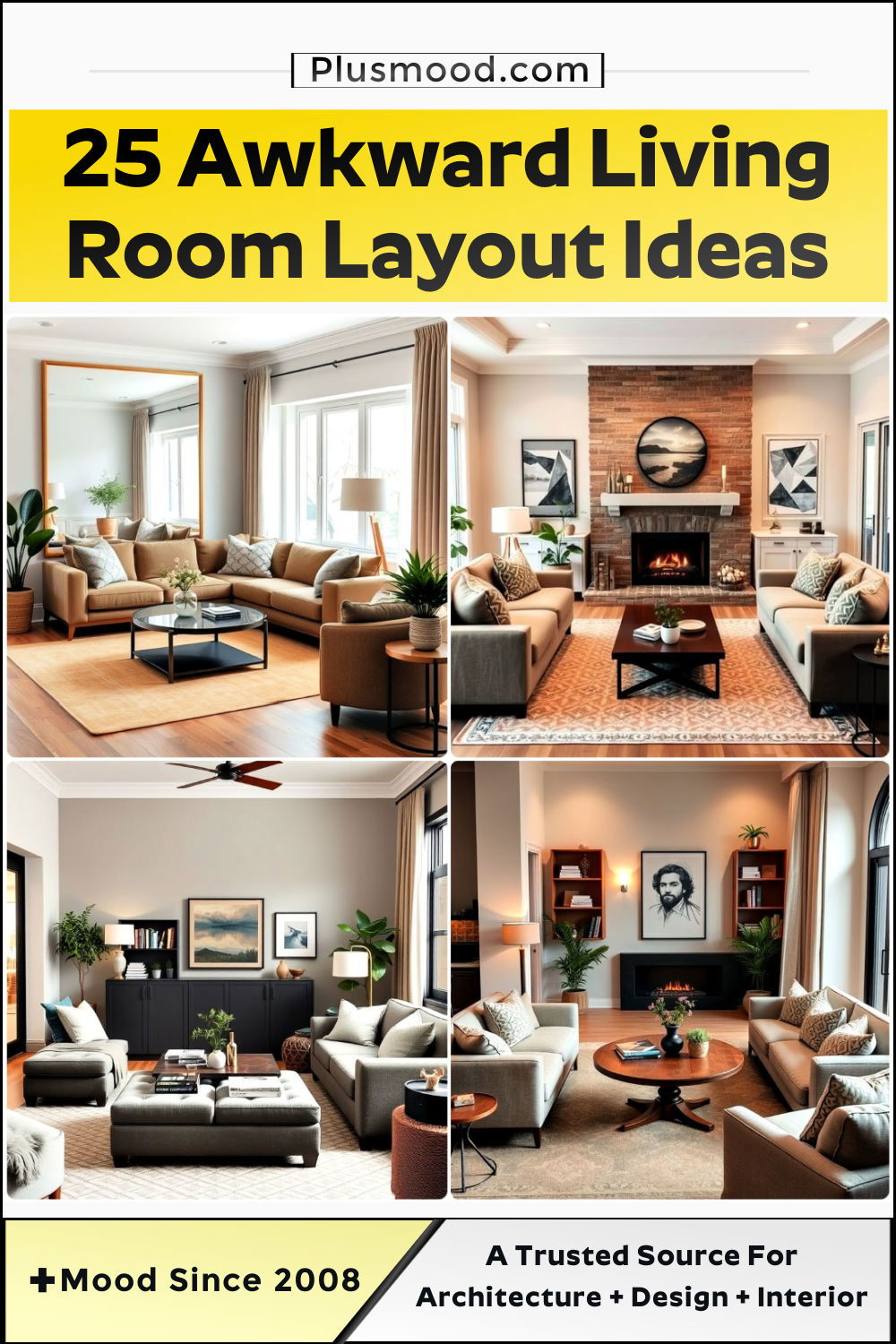
1. Use a Floating Sofa in the Center
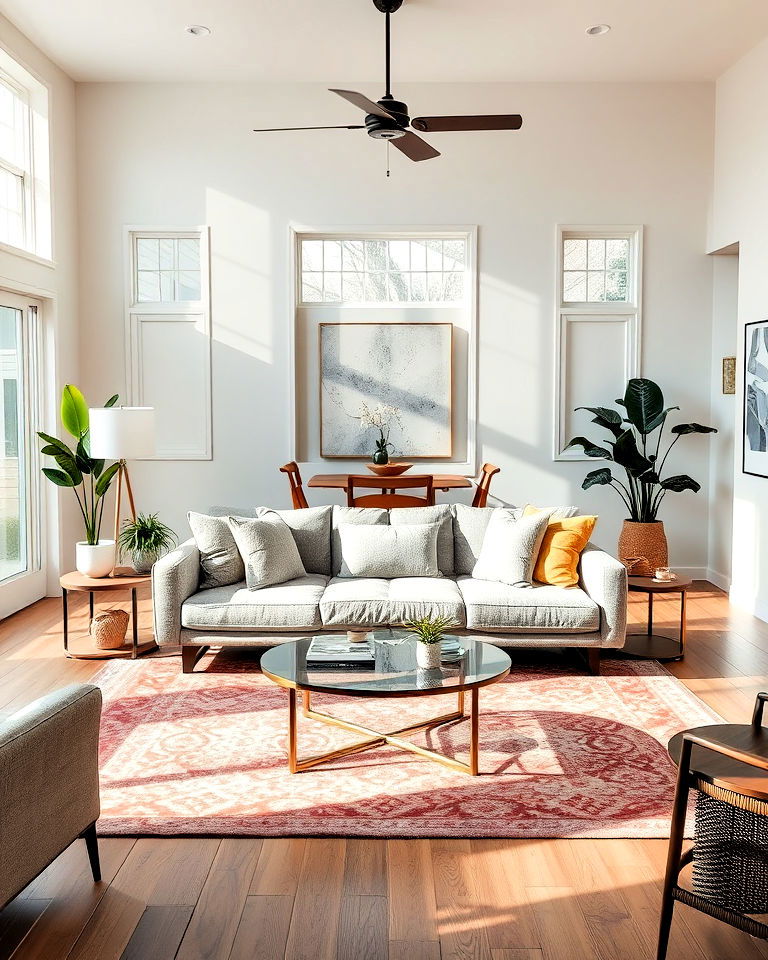
In living rooms where walls aren't available for seating, a floating sofa centered in the room can create a cozy, open feel. Positioning the sofa in the middle of the room allows for a walk-around layout, adding flexibility and flow. This setup is especially beneficial for open-concept homes, helping to define the living area without obstructing sightlines.
2. Angle Seating for Visual Interest
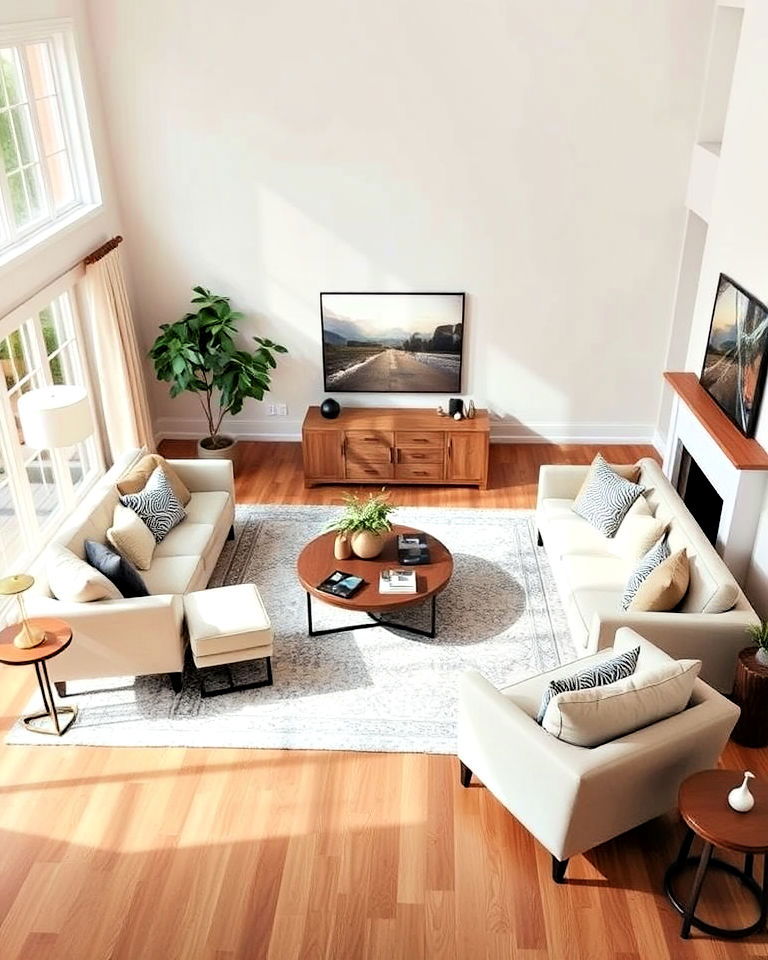
For living rooms with asymmetrical shapes, arranging seating at slight angles can make the space feel more harmonious. Angled chairs and sofas soften the rigid lines, guiding the eye around the room and adding visual interest. This layout is great for breaking up rectangular rooms that can feel too boxy and is a simple trick to enhance room dynamics.
3. Create a Dual-Purpose Nook
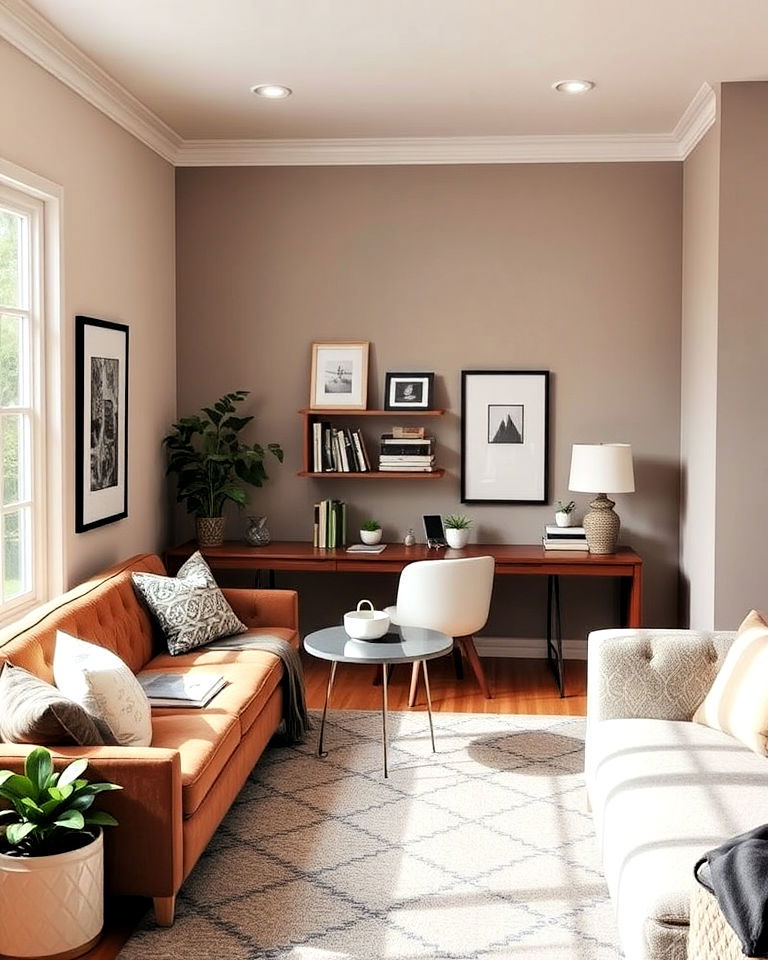
Discover awkward living room layout ideas to make your space feel more inviting and functional. If you have an awkward corner, turn it into a dual-purpose nook by adding a small table or desk. This can serve as a reading area or a mini workspace, making the most of otherwise unused space. It's perfect for rooms with open floor plans or for creating a cozy retreat in larger spaces without dividing the area too much.
4. Use a Sectional to Frame the Room
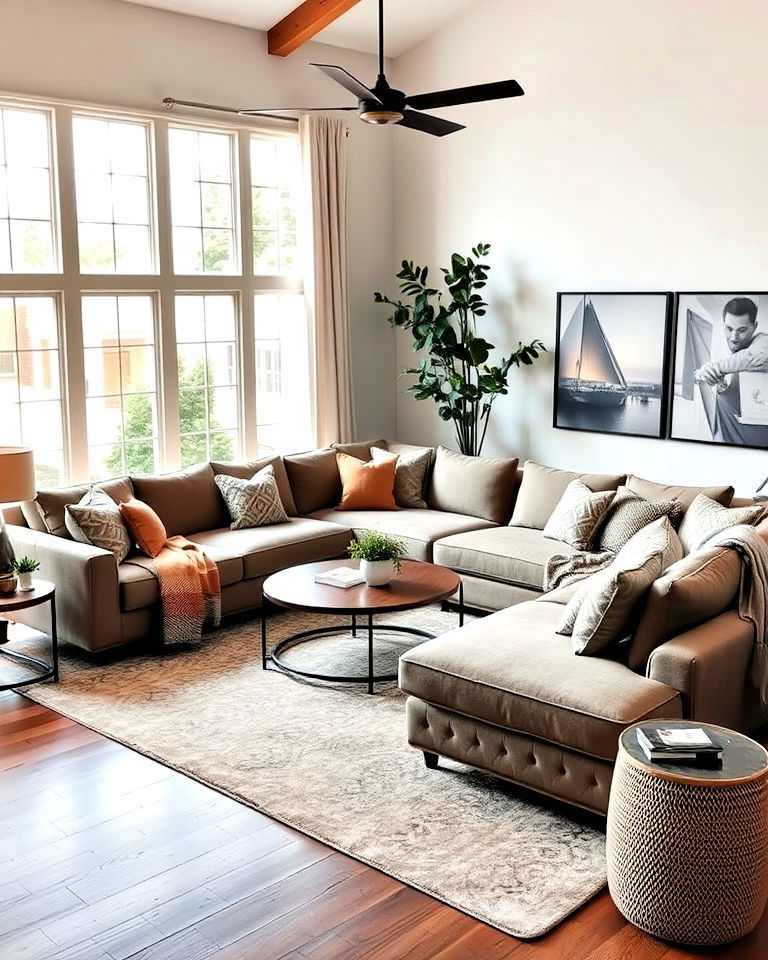
In irregularly shaped or large living rooms, a sectional can act as a natural divider. Positioning the sectional along the main walls or wrapping it around a corner creates a frame that organizes the space, aligning with sectional living room ideas for better layout. This setup can help define areas for conversation, relaxation, and entertainment in an otherwise open room, providing both comfort and structure.
5. Incorporate Built-in Seating
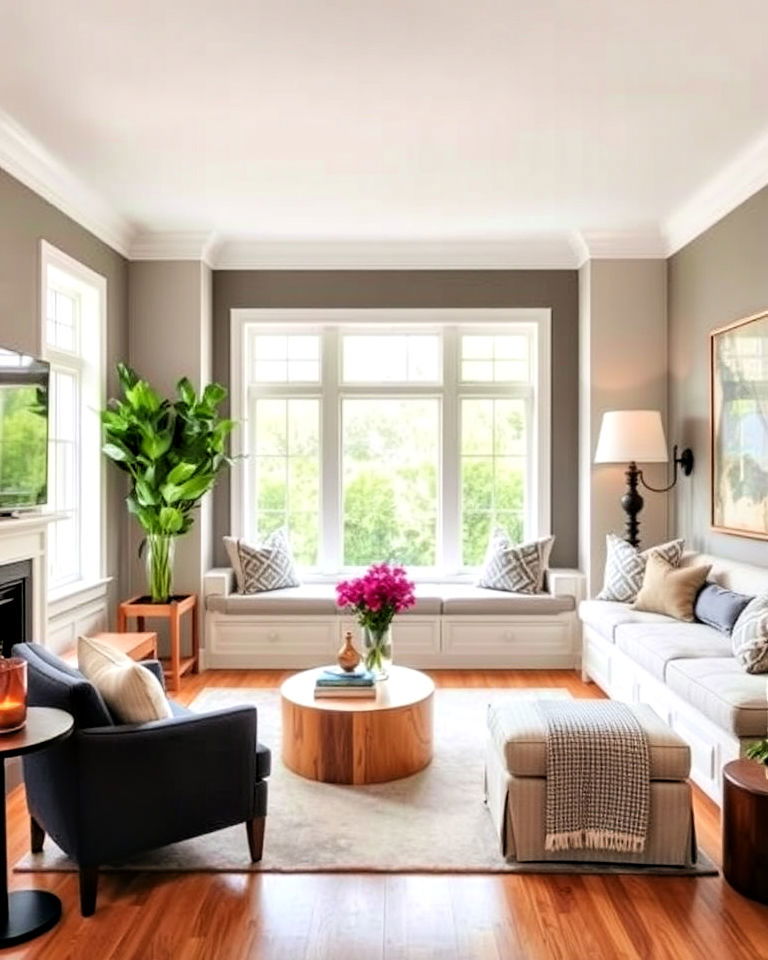
Rooms with challenging layouts can benefit from built-in seating along walls or under windows. This approach maximizes seating without taking up much floor space, allowing more room for movement. Built-in benches, for instance, are ideal for narrow rooms or living rooms with beams, creating an inviting and efficient use of space.
6. Add a Round Table in Small Living Rooms
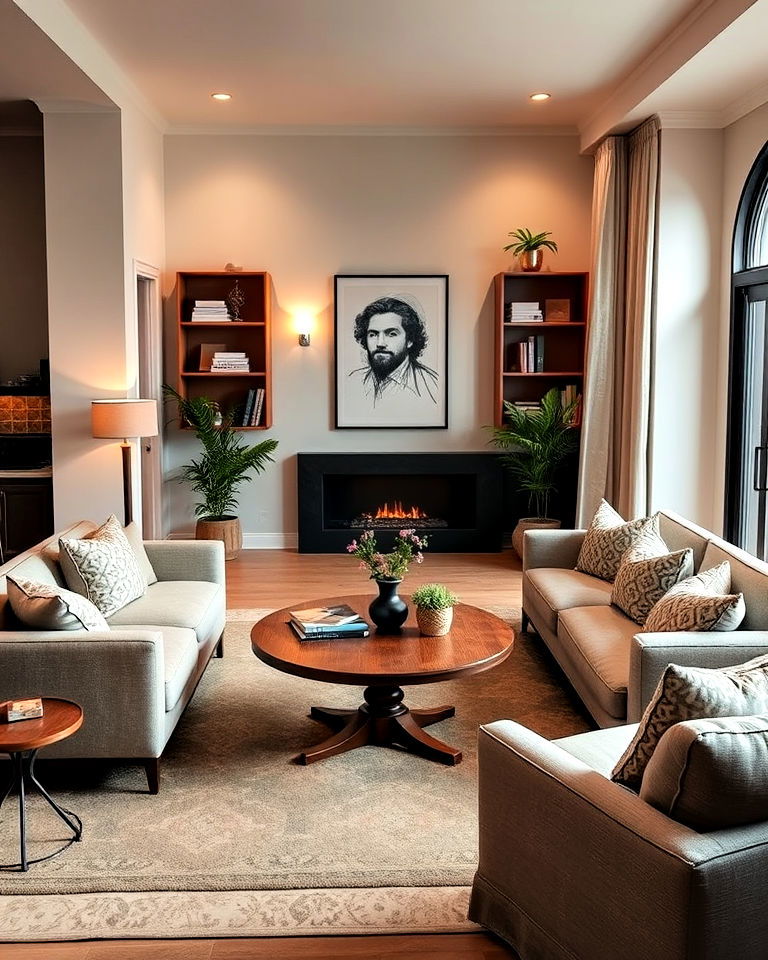
When dealing with tight or square living rooms, a round table can be a practical and stylish centerpiece. It takes up less space than a rectangular table, and its shape makes it easy to navigate around in compact areas. Round tables also encourage a more intimate, conversational arrangement, aligning well with small white living room ideas, perfect for small gatherings.
7. Create a Reading Alcove
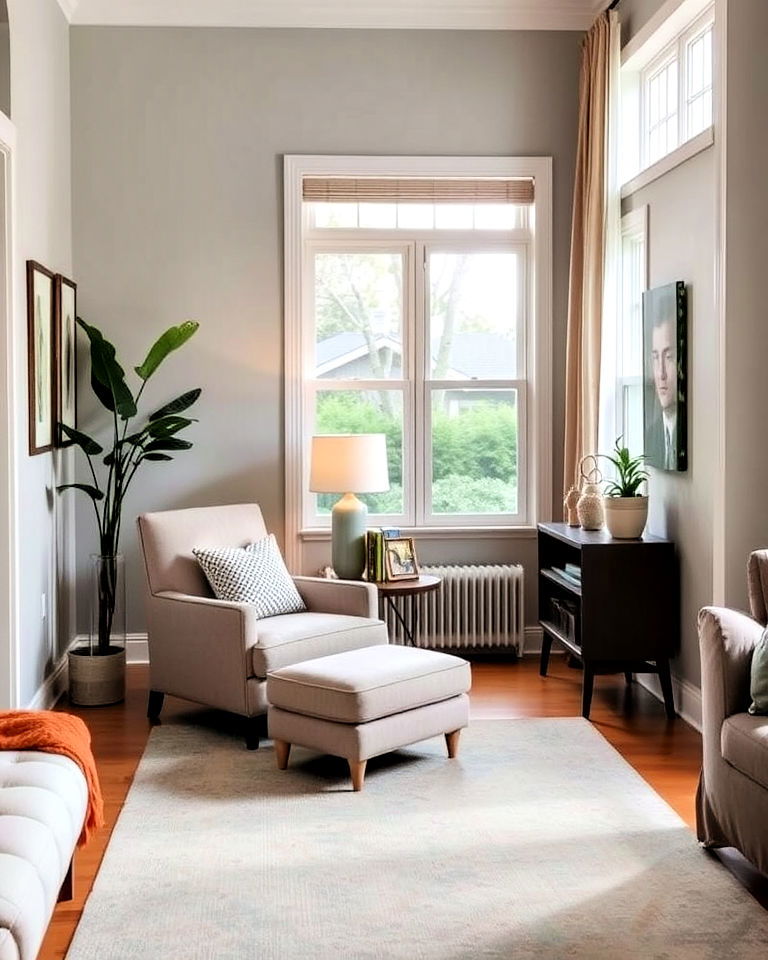
Transform an awkward corner into a reading alcove by adding a comfortable armchair, a small side table, and a lamp. This setup works particularly well in living rooms with oddly placed windows or corners, creating a cozy, purposeful space that's easy to retreat to. It's a clever solution to add functionality without crowding the main area.
8. Place a Sofa Against a Window
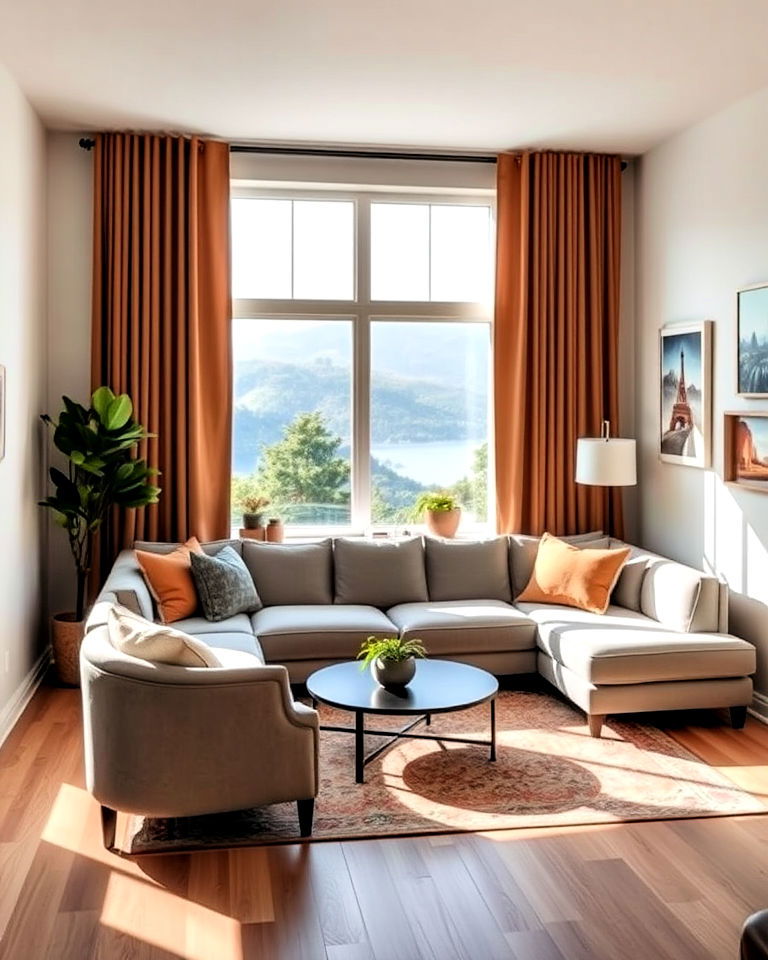
Explore creative rectangle awkward living room layout ideas that enhance flow and style. If wall space is limited, place a sofa directly against a window. This setup can enhance the natural light in your space while freeing up walls for storage or decor. It works particularly well in rooms with scenic views, turning the window into a focal point and creating a bright, welcoming atmosphere.
9. Opt for a Modular Furniture Layout
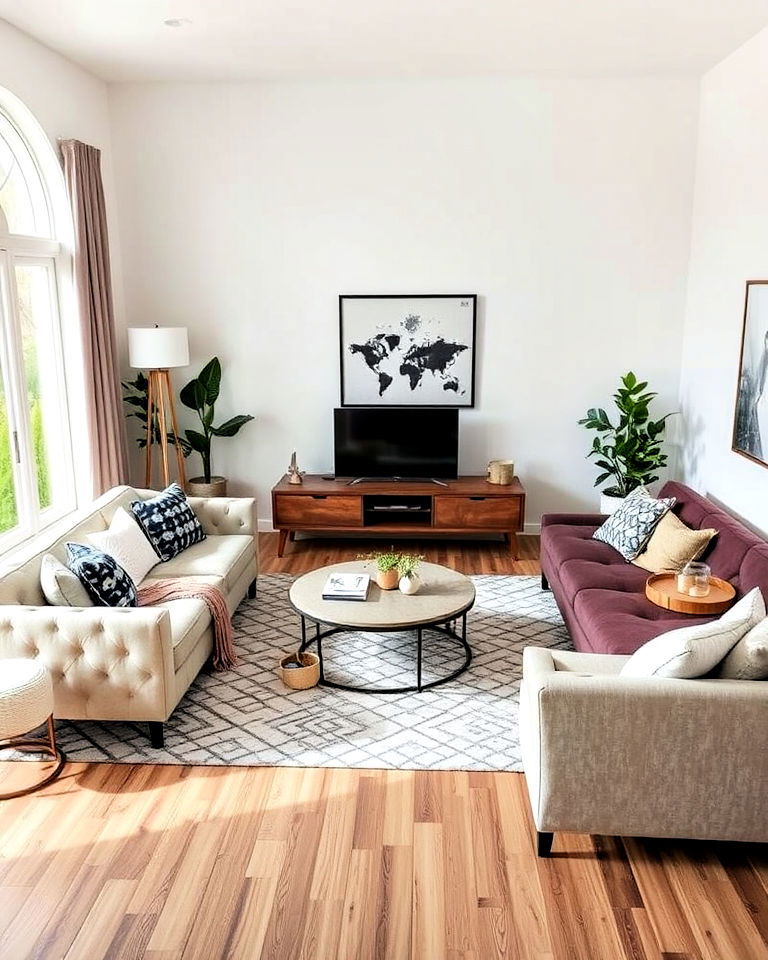
Modular furniture allows for flexibility in oddly shaped rooms, letting you reconfigure seating based on your needs. Choose pieces that can be moved easily or rearranged, like modular sofas or ottomans, to create versatile layouts that adapt to your space. This approach is especially useful for multifunctional rooms where furniture needs change frequently.
10. Position a Console Behind the Sofa
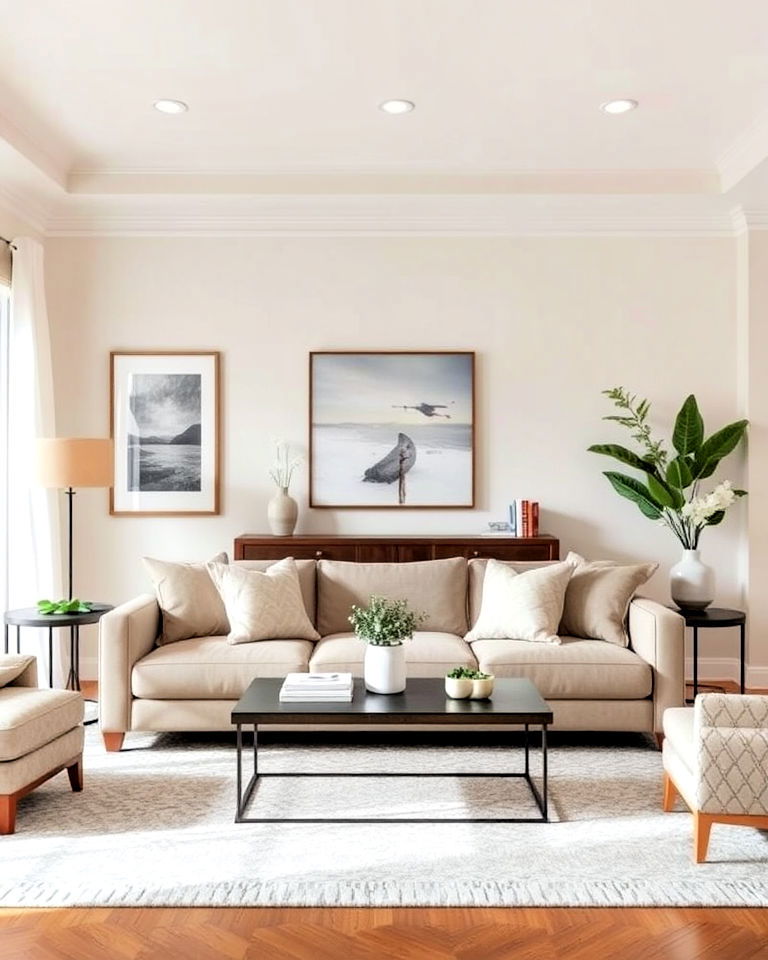
For living rooms that feel empty or lack focal points, placing a console table behind the sofa adds both function and visual interest. This layout is ideal for creating a transitional area between spaces in open-concept rooms, providing storage or display space while defining the living area.
11. Divide the Space with a Bookshelf
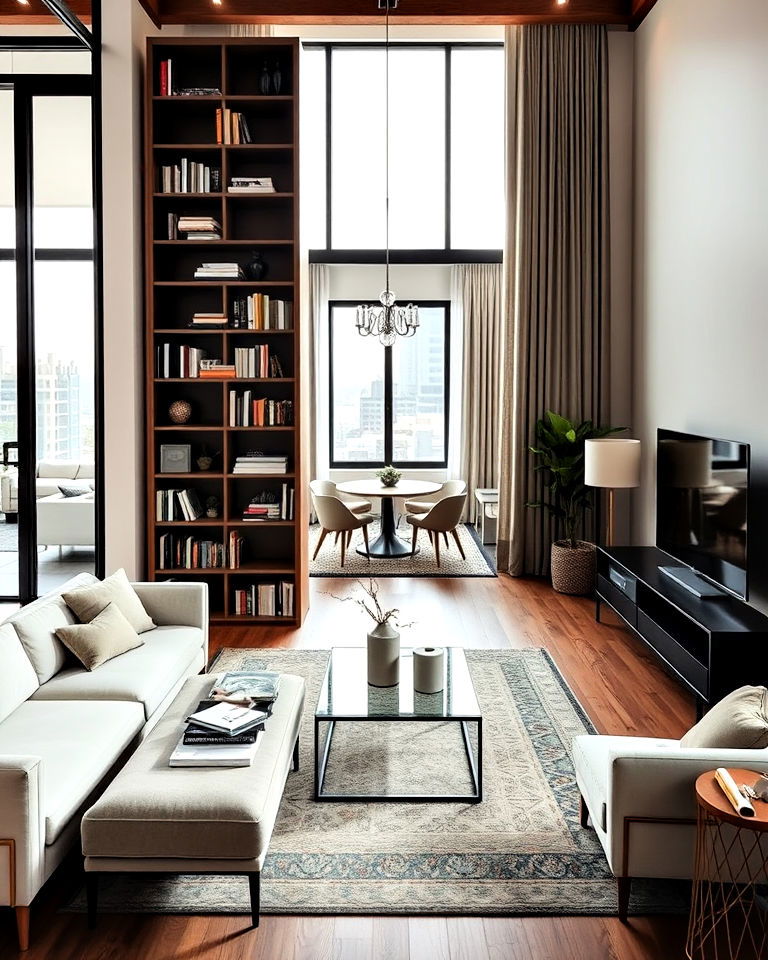
In open layouts, a tall bookshelf can act as a subtle divider without blocking light or creating a cramped feeling. Position it between the living room and adjacent areas to define spaces while adding storage. This works well in small apartments where defining each zone is essential for a balanced layout.
12. Arrange Furniture Around a Central Rug
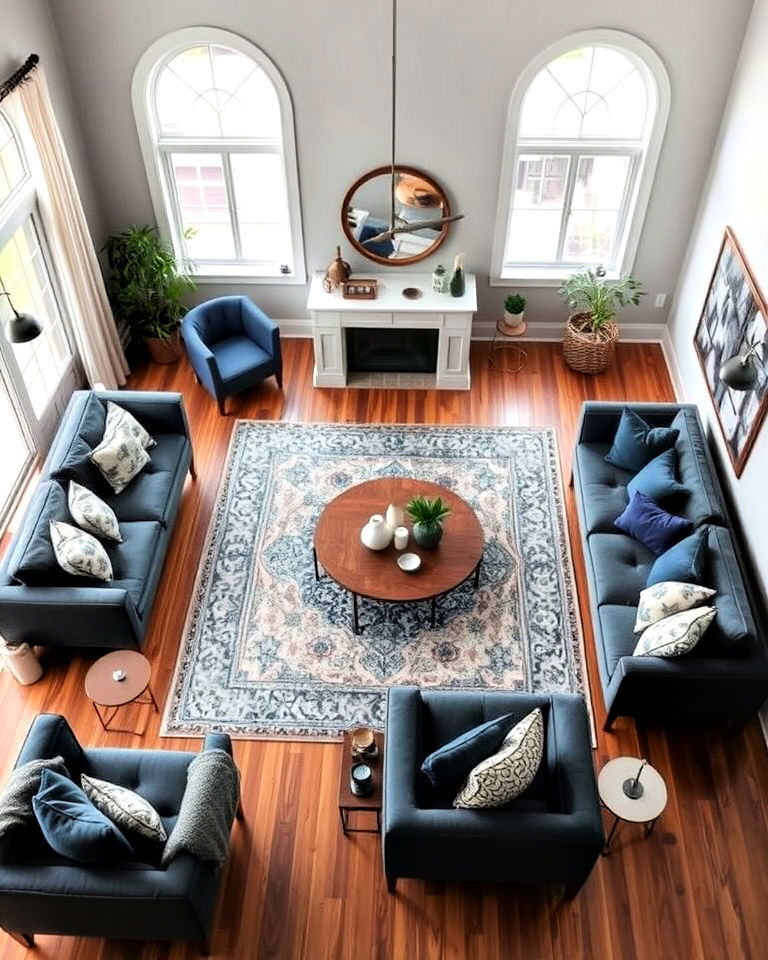
In living rooms with challenging shapes, anchoring furniture around a central rug creates a cohesive look. This helps to visually unify the space, especially in larger or open-concept areas. Choose a rug that complements your decor and consider living room paint colors to enhance the arrangement, then position seating around its edges for a balanced, grounded look.
13. Embrace Minimalism for Small Living Rooms
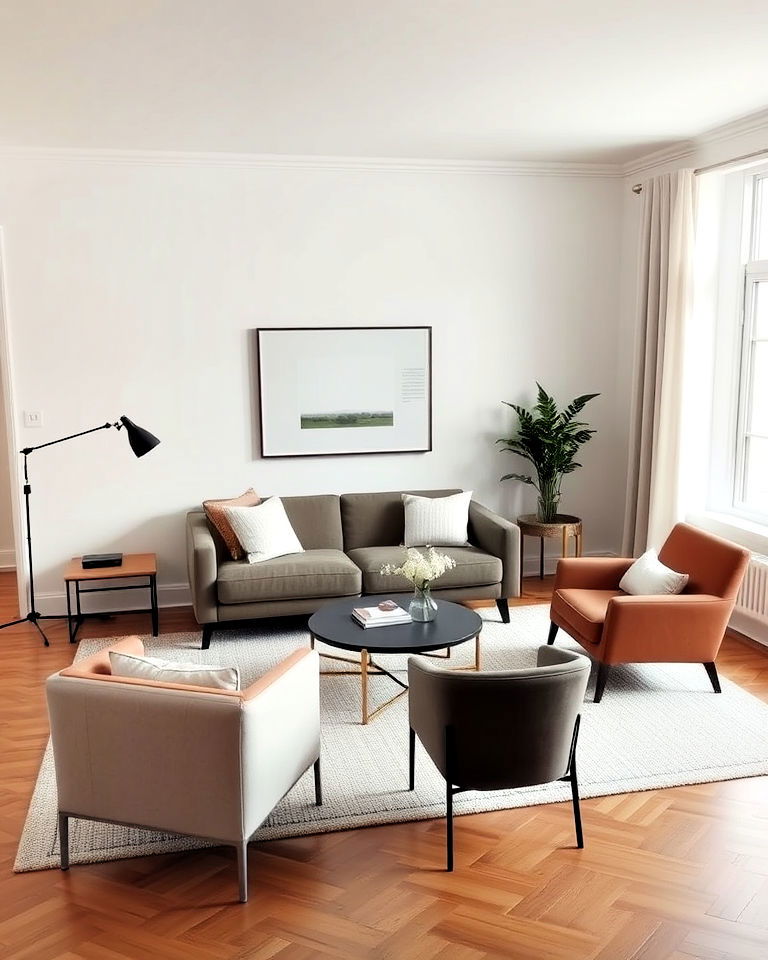
Solve your space problems with an awkward living room layout with fireplace and design tips. A minimalist approach, with fewer but carefully chosen pieces, can make a small or awkward living room feel spacious. Choose a streamlined sofa, a compact coffee table, and one or two accent chairs to create a simple but effective layout. This approach maximizes space and reflects minimalist decorating ideas, making even the tightest layouts functional and inviting.
14. Use an L-shaped Sofa for Corner Layouts

For living rooms with corner configurations, an L-shaped sofa can make the most of the available space. Position it along two walls or facing the center of the room to create a welcoming conversation area. This layout helps to open up floor space, making it ideal for smaller rooms or those with corner fireplaces.
15. Add Low Furniture for High Ceilings
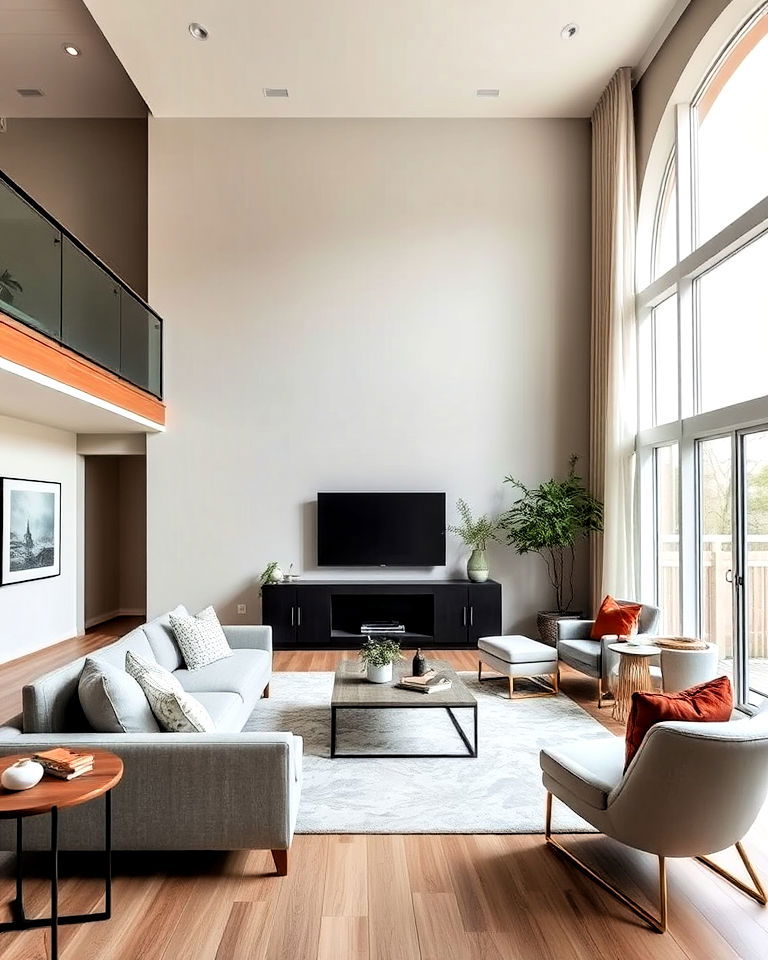
In rooms with high ceilings but limited floor space, opt for low-profile furniture that doesn't overwhelm the room. A low sofa or coffee table can create balance by drawing the eye horizontally, making the space feel cozier and more cohesive without emphasizing the height disparity.
16. Integrate Storage Ottomans
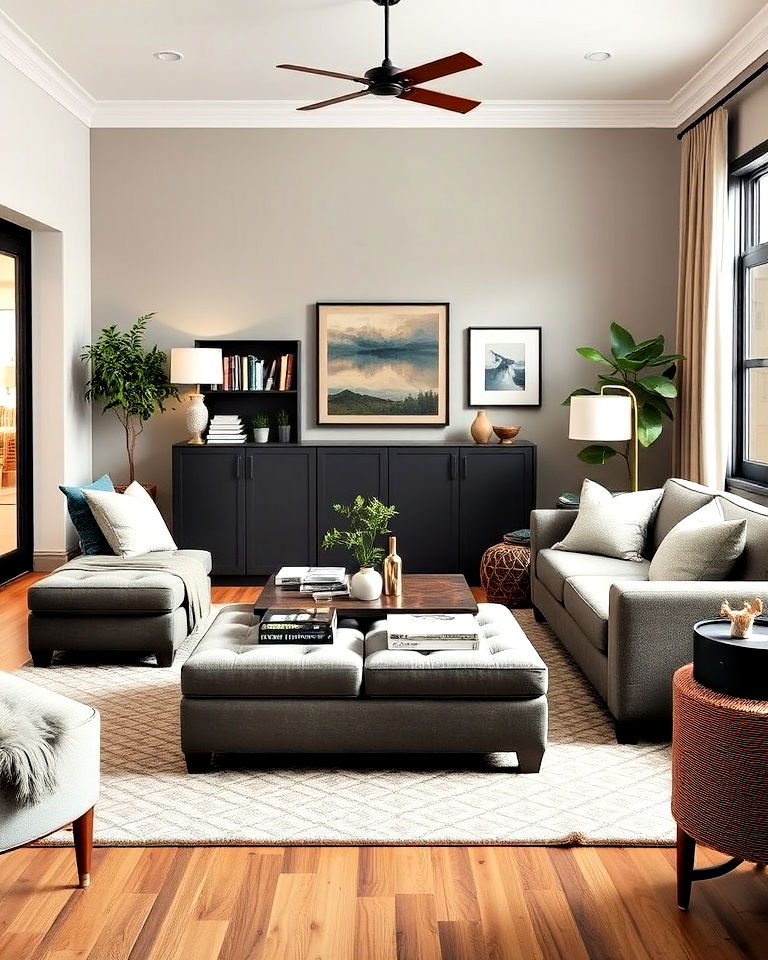
For multifunctional living rooms, storage ottomans add both seating and hidden storage. Place one or two ottomans in front of or beside your seating area to store blankets, books, or remotes. This setup keeps clutter at bay while providing extra seats for guests, making it ideal for smaller or shared spaces.
17. Create Zones with Area Rugs
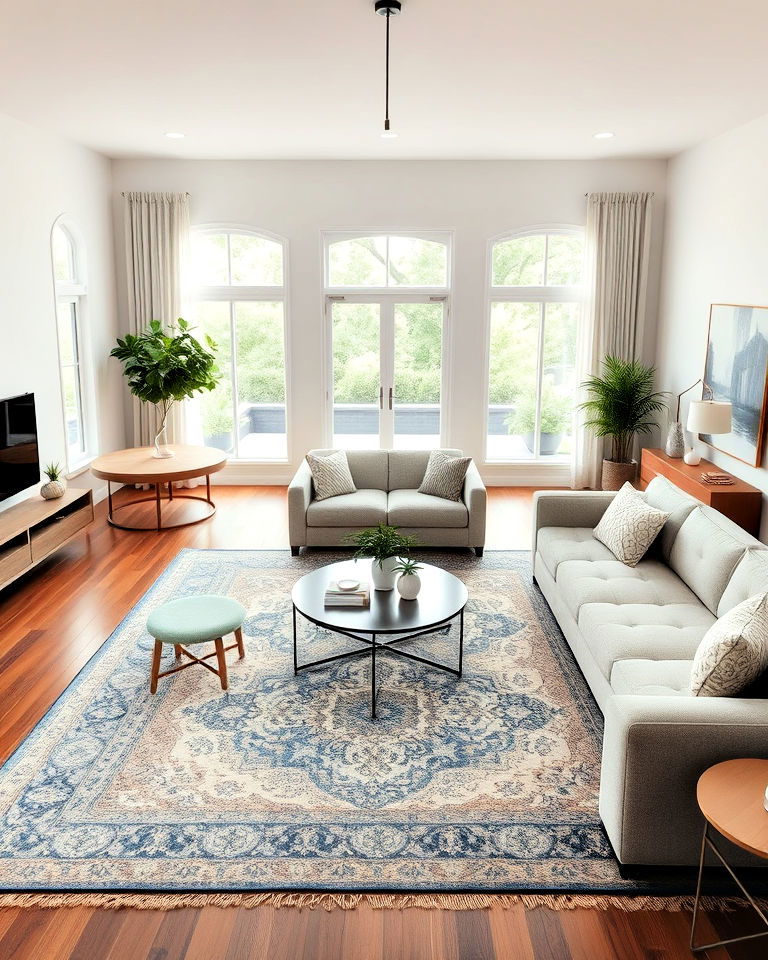
In open-concept spaces, area rugs can help create defined zones for living, dining, and lounging. Use different rug styles or sizes for each zone to visually separate the areas, or pair them with living room accent wall ideas for added definition. This layout helps prevent a chaotic look in multi-purpose rooms, making each section feel intentional and cohesive.
18. Go Vertical with Wall-mounted Storage
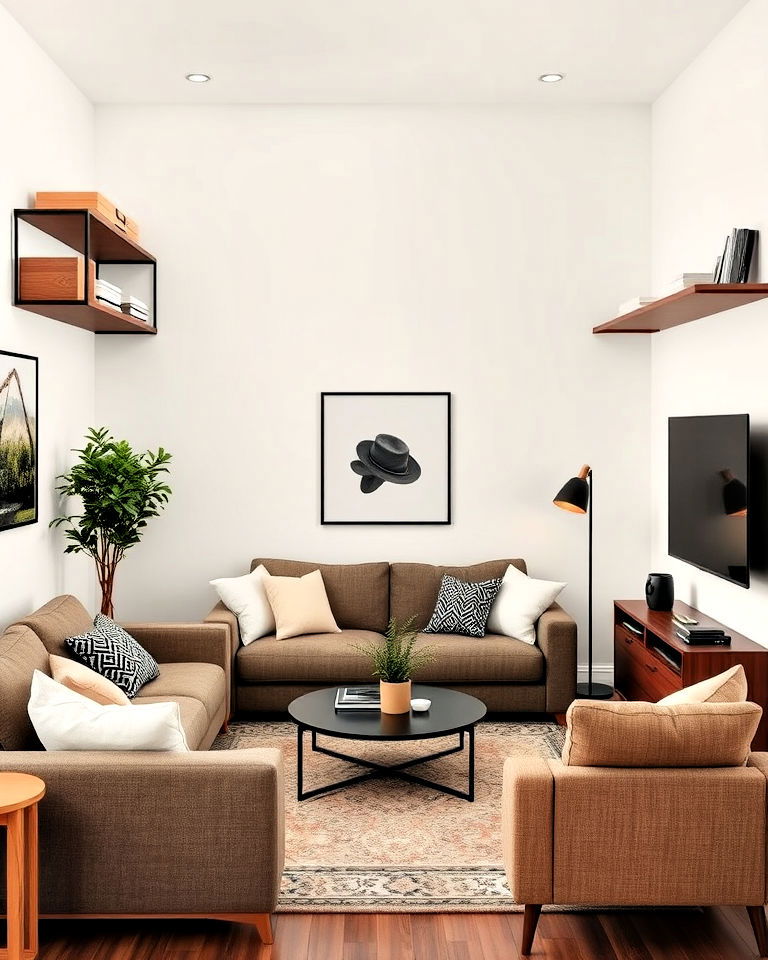
Check out small apartment awkward living room layout ideas to maximize every inch of your space. In narrow or compact living rooms, wall-mounted storage solutions like shelves or cabinets free up floor space. Position them above seating or along walls to maximize storage without encroaching on the living area, integrating living room wall decor ideas. This layout keeps things organized and accessible, especially in small or multi-purpose rooms.
19. Frame the Fireplace with Seating
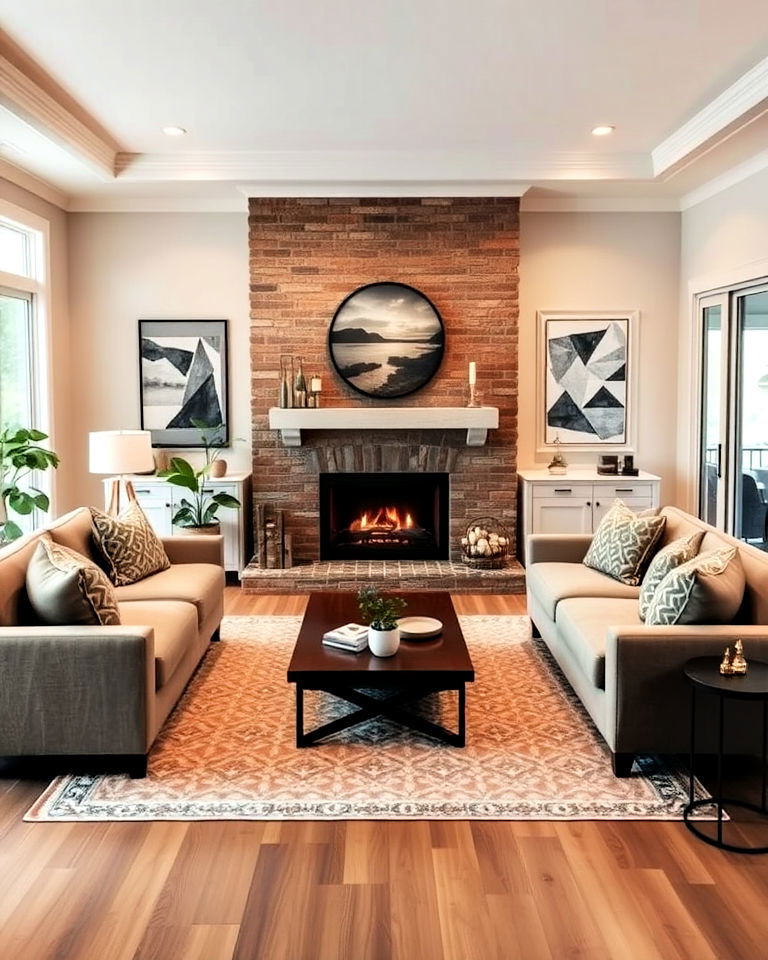
If your living room has a fireplace, arrange seating to frame it as a focal point. Position sofas or armchairs to face the fireplace, creating a cozy, conversational area with fireplace accent wall ideas to enhance the visual appeal. This layout is ideal for creating a warm, inviting atmosphere, drawing from cozy living room ideas, particularly in spaces where the fireplace is a dominant feature.
20. Use a Mirror to Expand Small Spaces
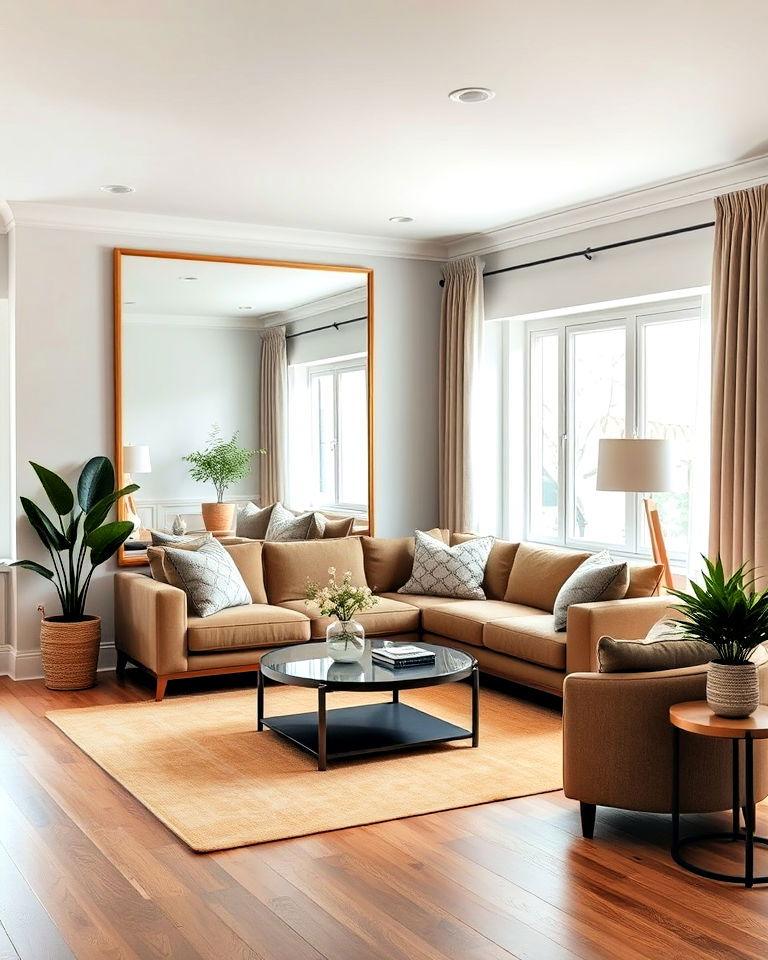
In small or narrow living rooms, a large mirror can make the room appear more spacious. Position the mirror opposite a window to reflect natural light, brightening the room. This trick adds depth and openness, making even the tightest spaces feel more expansive and inviting.
21. Incorporate a Sliding Door Divider

For awkward, multi-functional living rooms, a sliding door or partition can provide separation without requiring a permanent wall. Use a sliding door to close off sections of the room when privacy is needed or to create designated zones in open spaces, making it both functional and adaptable.
22. Arrange Seating in a U-Shape
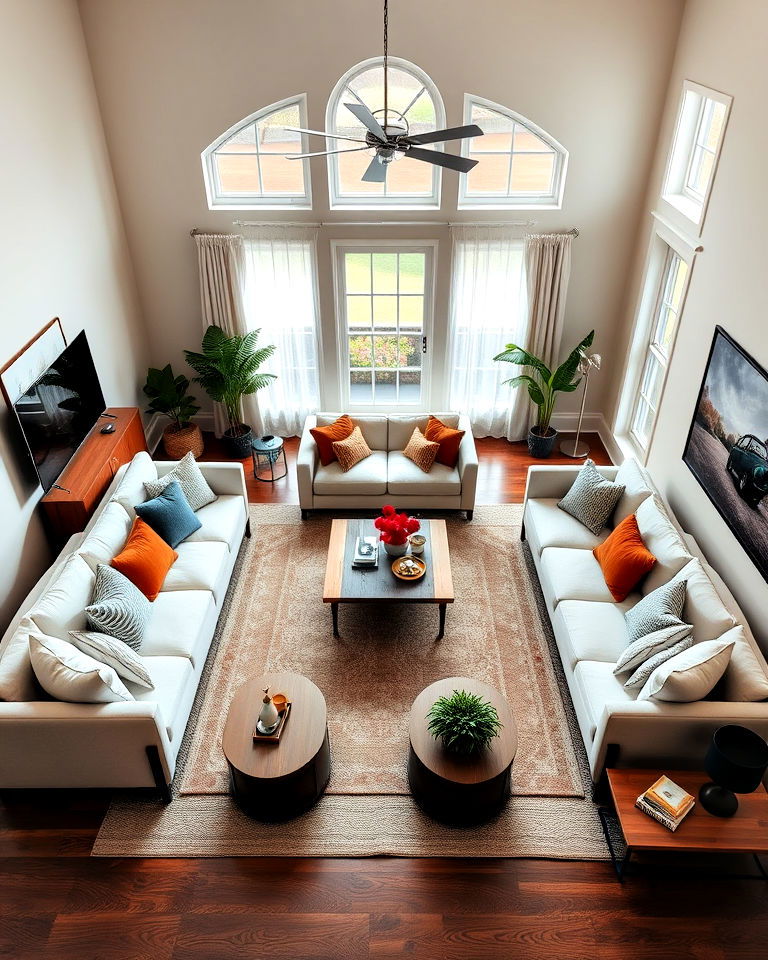
A U-shaped seating arrangement works well in larger, square rooms by creating an intimate, inclusive setup. Position sofas and chairs in a U-shape around a central coffee table to foster conversation and maintain a cozy atmosphere, inspired by living room couch ideas, perfect for entertaining and relaxation.
23. Place a Daybed Against a Wall
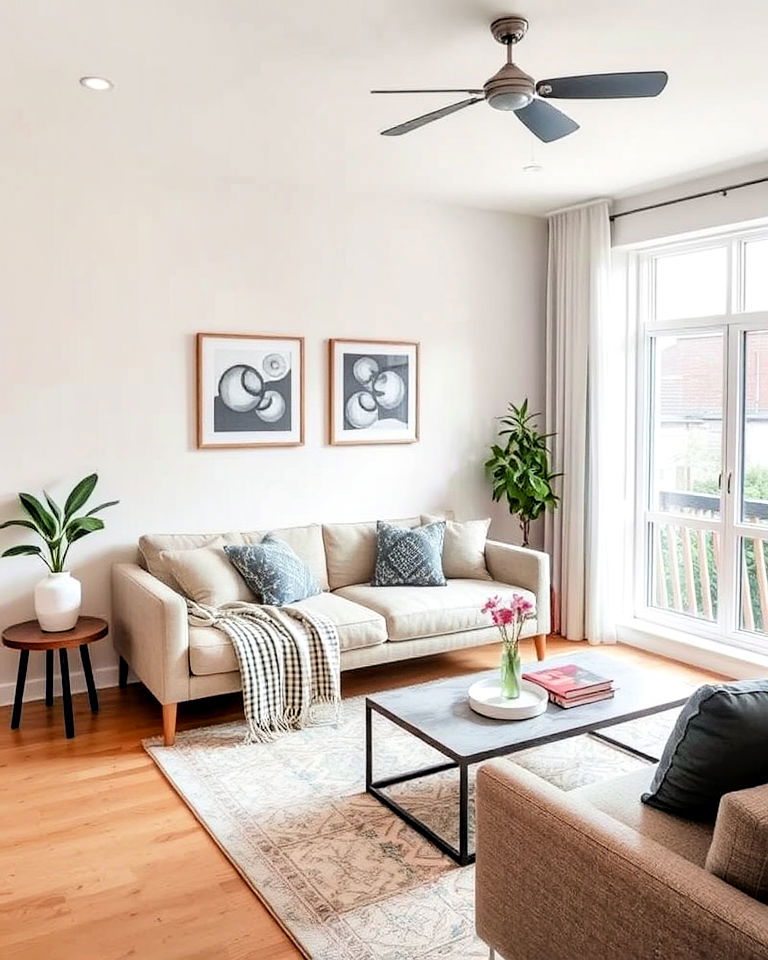
If space is tight but you want extra seating or a lounge area, a daybed along a wall can be a stylish solution. It offers seating during the day and a place to relax or nap without overwhelming the space, making it ideal for small apartments or multi-use living rooms.
24. Use Compact Accent Chairs for Tight Spaces
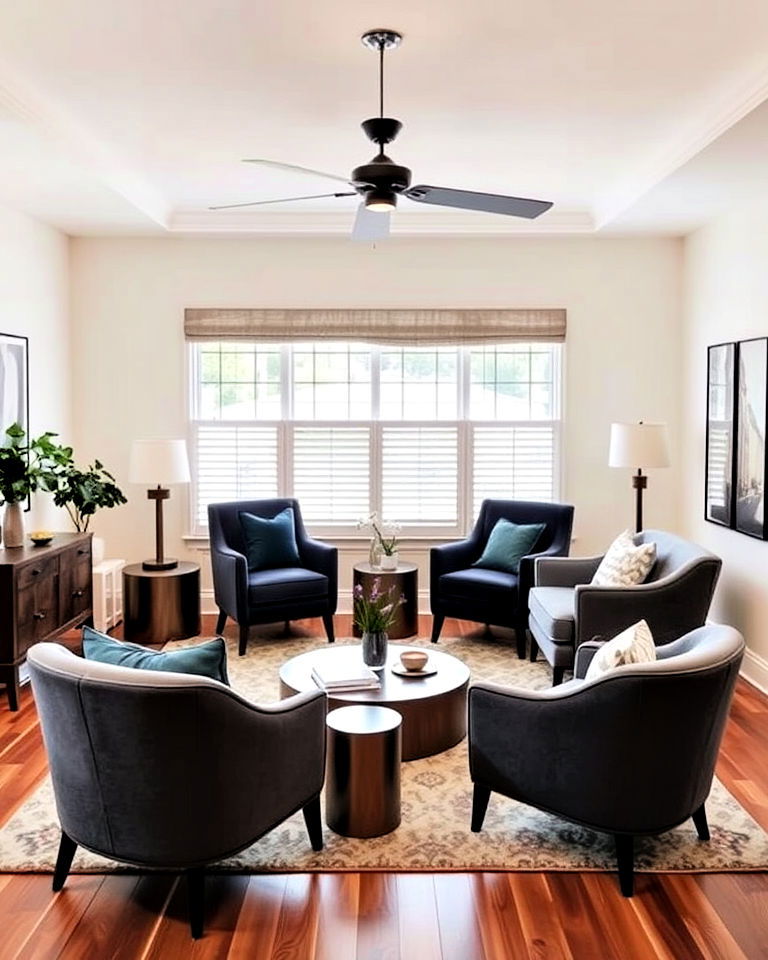
In small or awkwardly shaped rooms, compact accent chairs can provide extra seating without crowding the space. Position them in corners or at angles to create a balanced look. This layout adds versatility, allowing you to move the chairs around easily as needed.
25. Install a Floating Media Console

A floating media console creates a clean, streamlined look that's perfect for compact spaces. Mounted on the wall, it frees up floor space and creates room for storage or decor below. This layout works well in modern spaces, adding functionality while keeping the room looking open and uncluttered.
Conclusion:
Achieving a balanced, functional living room, regardless of shape or size, is all about intentional placement. Use furniture as a tool to divide spaces, embrace compact storage solutions to keep areas clutter-free, and lean into layout tricks that enhance the room's flow. Strategic arrangements—like using floating sofas, incorporating built-in seating, or adding angled chairs—help awkward spaces reach their full potential. These ideas not only make the room feel harmonious but also boost usability, allowing every corner to contribute to a seamless, cohesive design.
Key Points:
- Floating and Angled Furniture: Centering a sofa or using angled seating softens rigid layouts, creating a welcoming, flexible arrangement that encourages movement.
- Dual-purpose and Built-in Seating: Converting unused corners into reading nooks or installing built-in seating maximizes space while adding function and coziness.
- Defined Zones with Area Rugs: Rugs help create visually distinct areas, especially in open-concept spaces, organizing the room for different purposes like lounging or dining.
- Strategic Use of Sectionals and L-Shapes: Sectionals and L-shaped sofas frame awkward or large spaces effectively, helping define social zones without clutter.
- Compact and Vertical Storage: Wall-mounted shelves, floating consoles, and storage ottomans optimize space without crowding, keeping the layout open and organized.
- Focus on Lighting and Mirrors: Large mirrors and natural light enhance the feeling of space in small or narrow rooms, making the layout feel brighter and more open.
What to Do Next
- Assess Your Space: Measure the room and note any architectural limitations or awkward spots.
- Define Focal Points: Identify features like fireplaces or windows to arrange furniture around and create visual interest.
- Experiment with Layouts: Test different furniture placements, focusing on maximizing comfort, flow, and functionality.
- Incorporate Multi-functional Pieces: Consider modular furniture, built-ins, and compact storage options to make the most of your space.
- Use Decor Thoughtfully: Add area rugs, mirrors, and lighting strategically to enhance space and visual harmony.

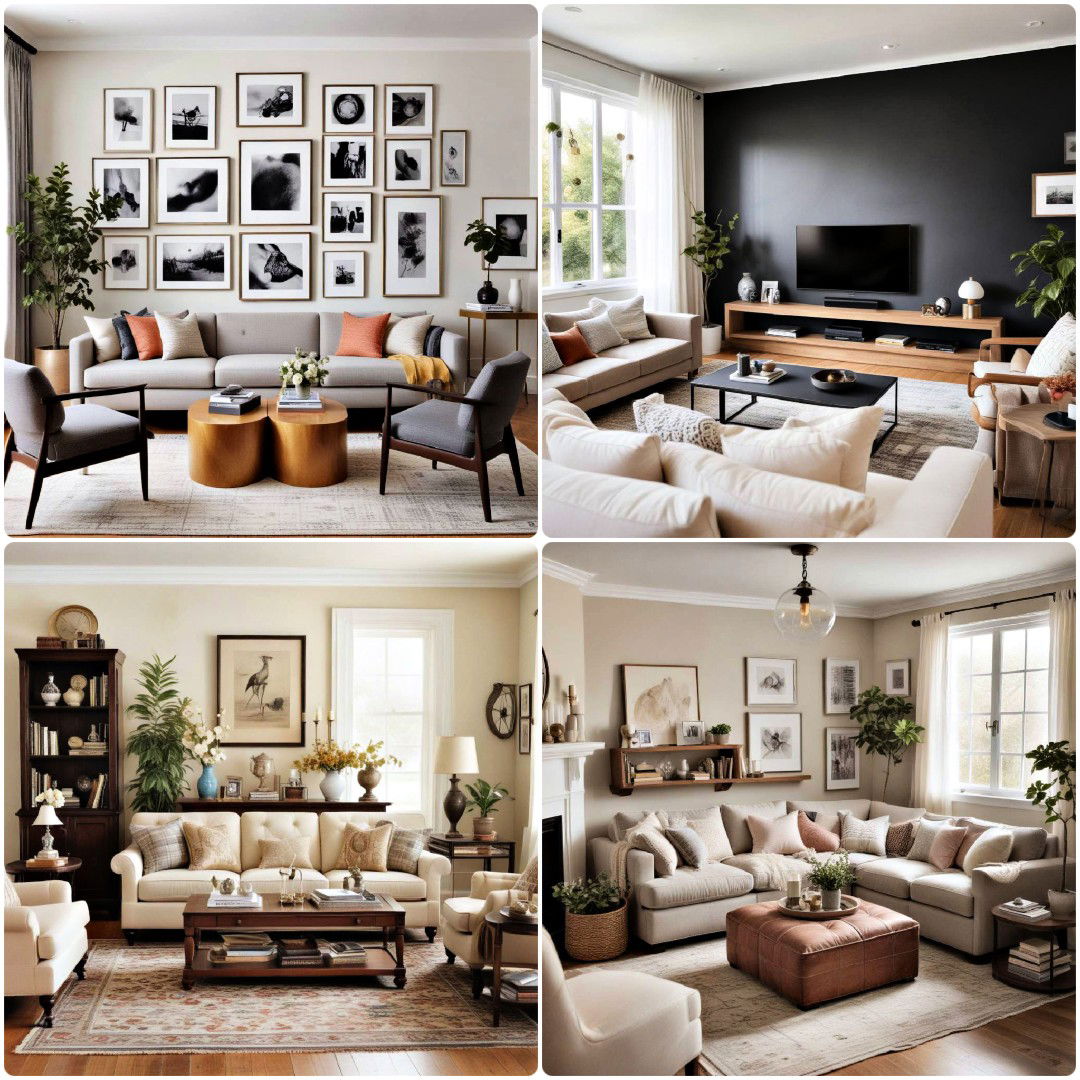


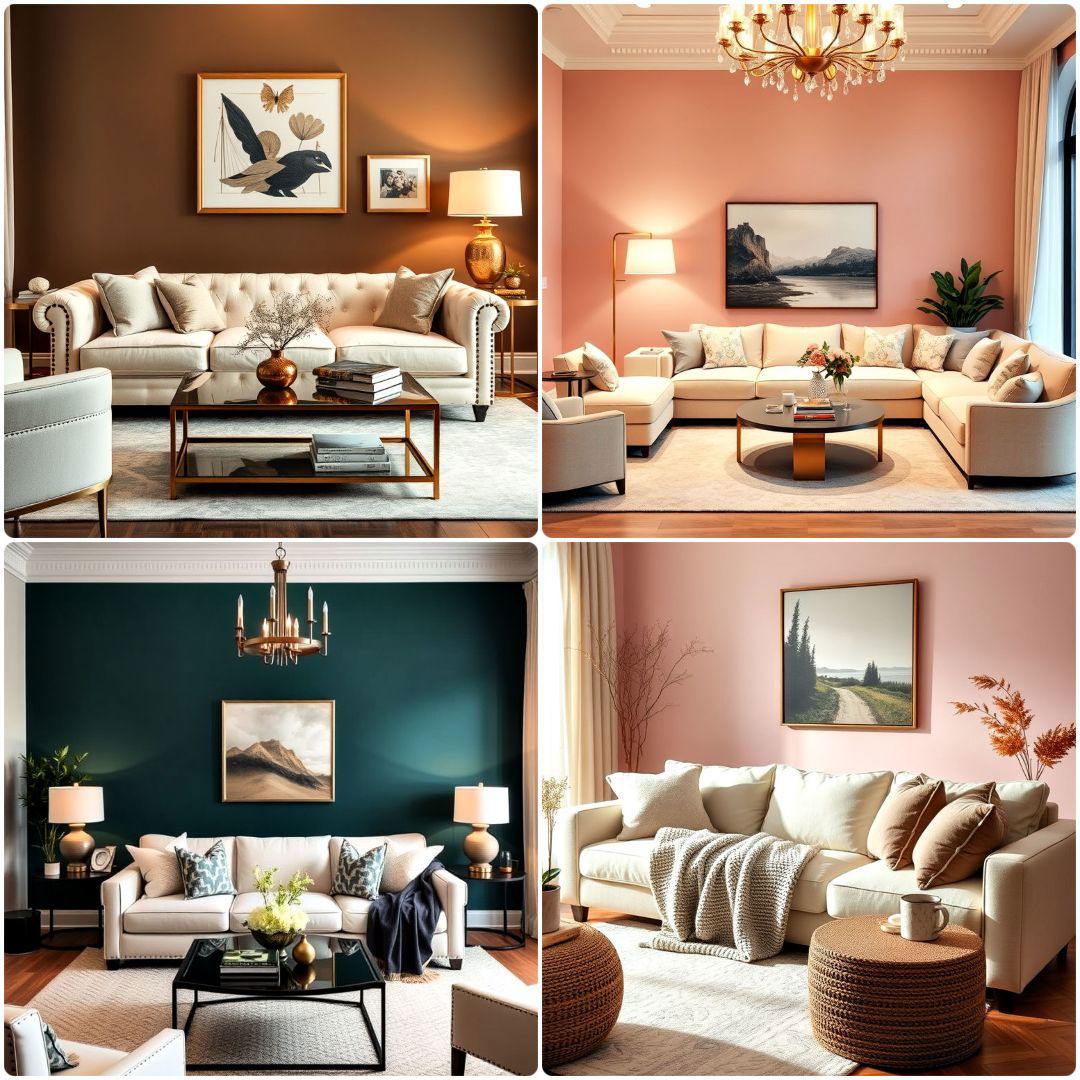
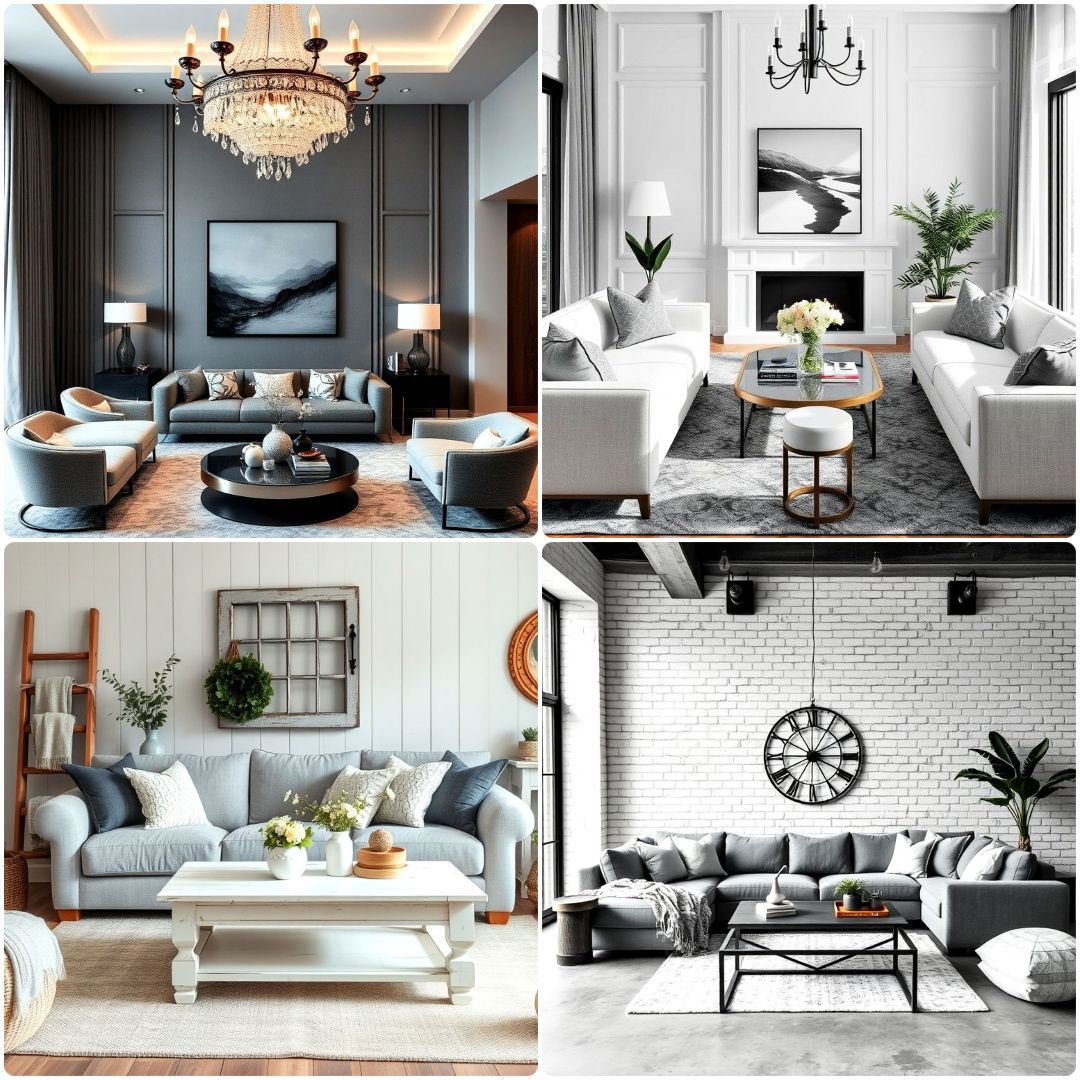
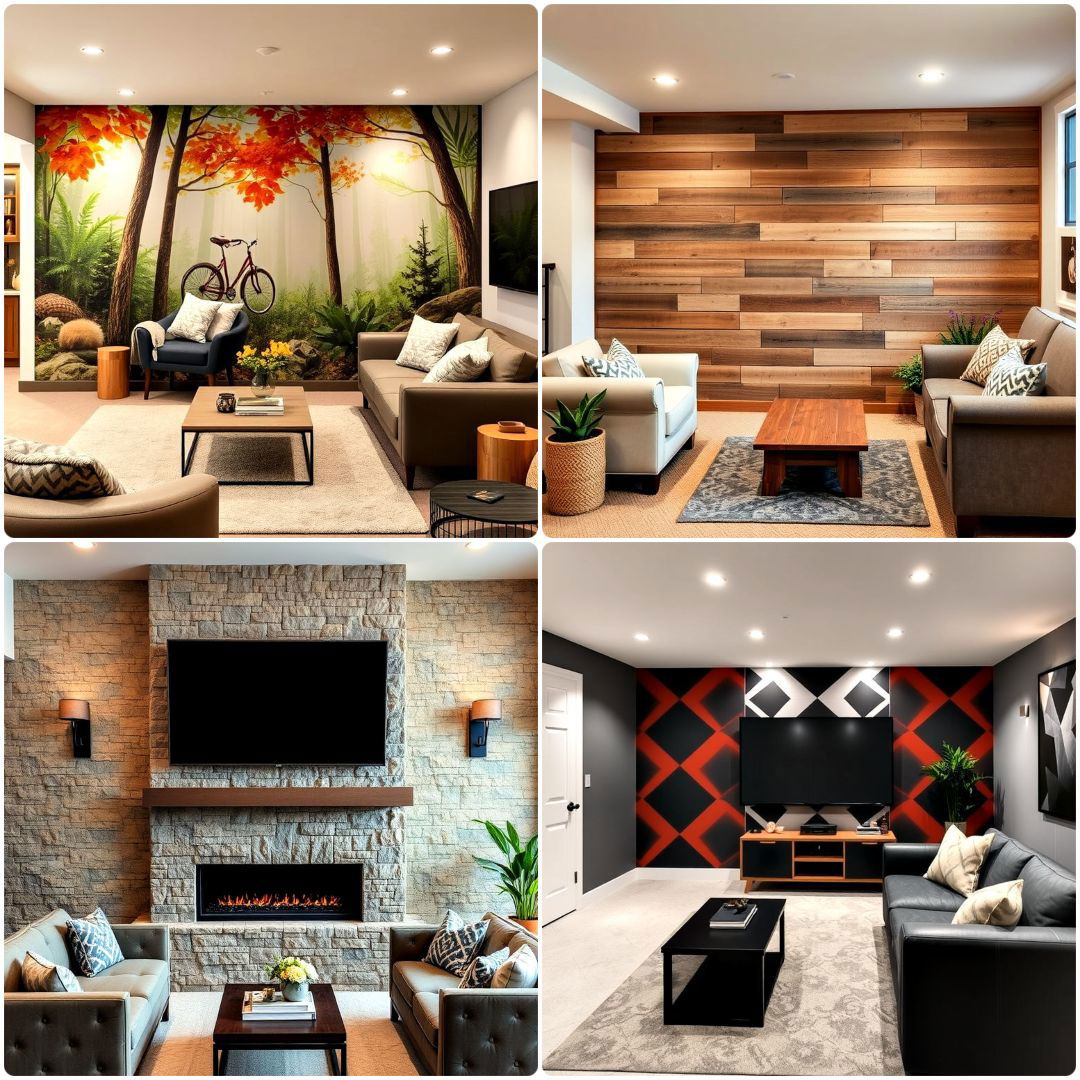
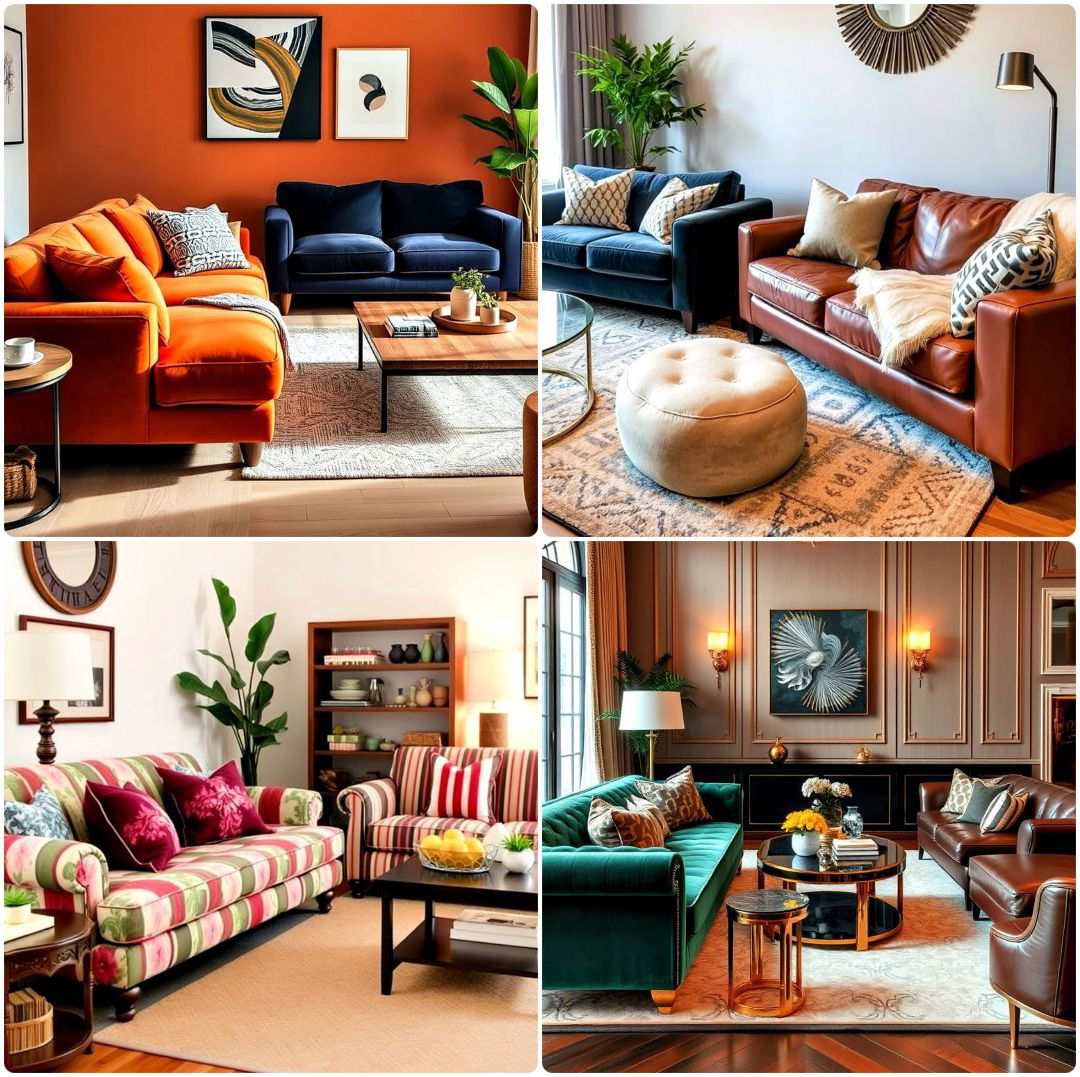
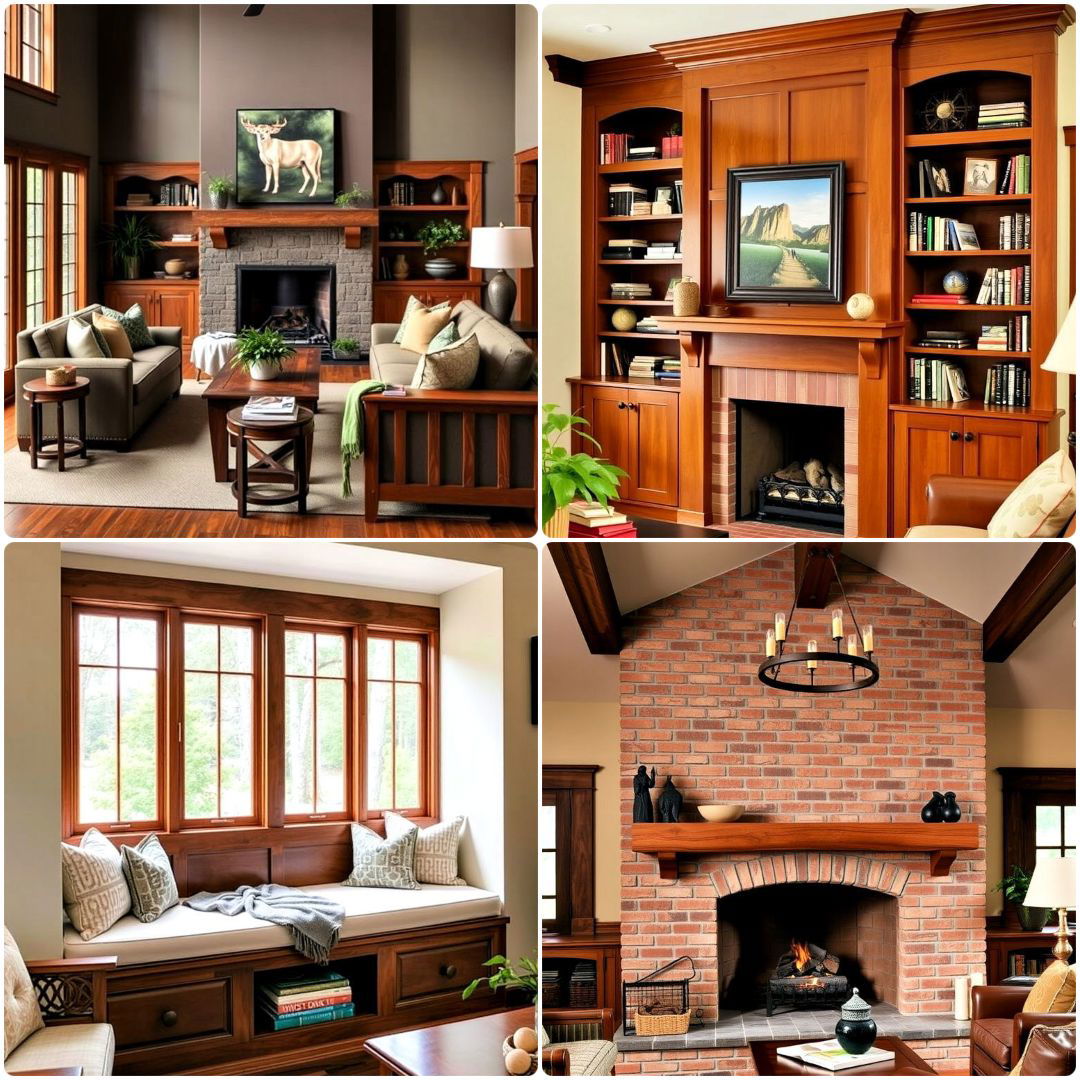
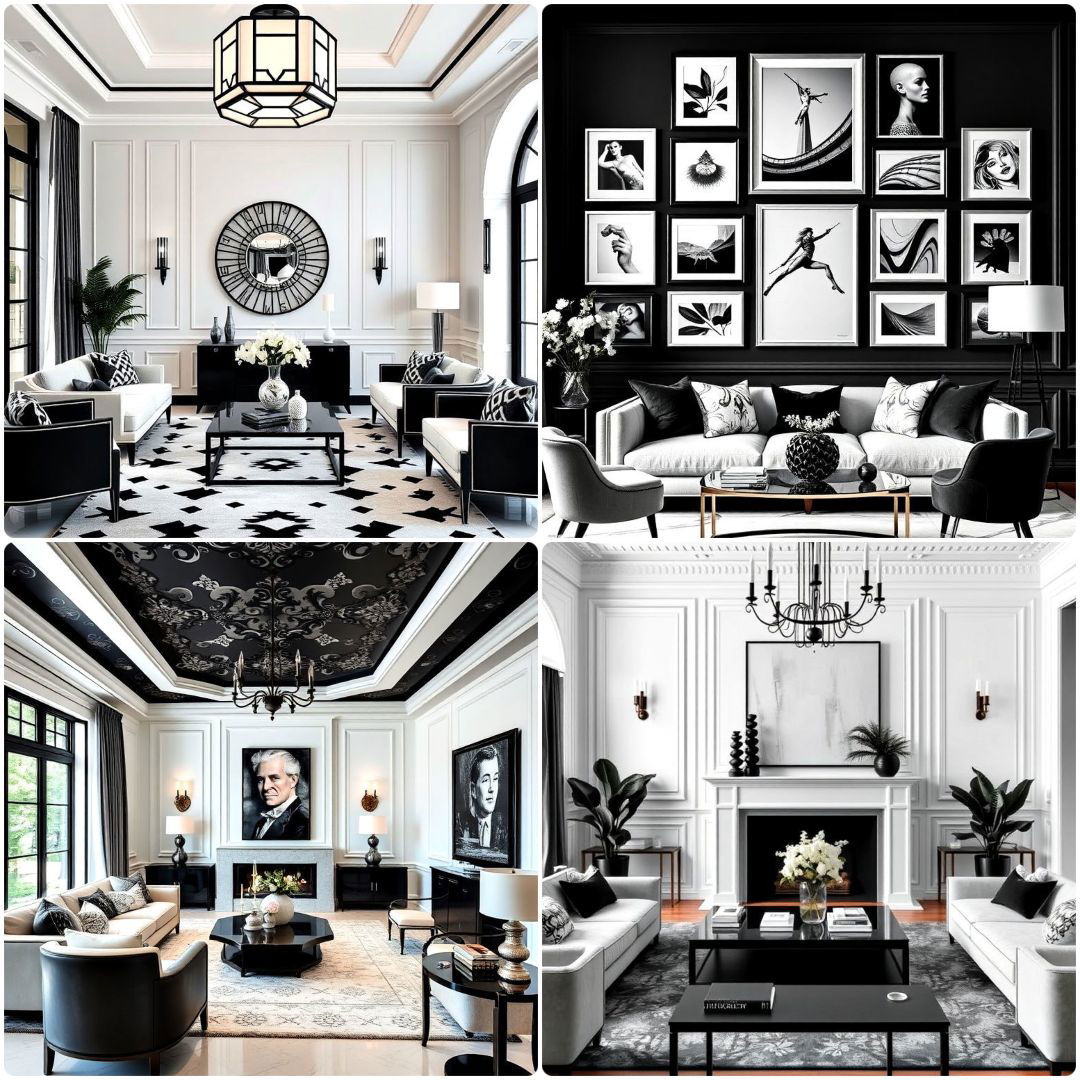
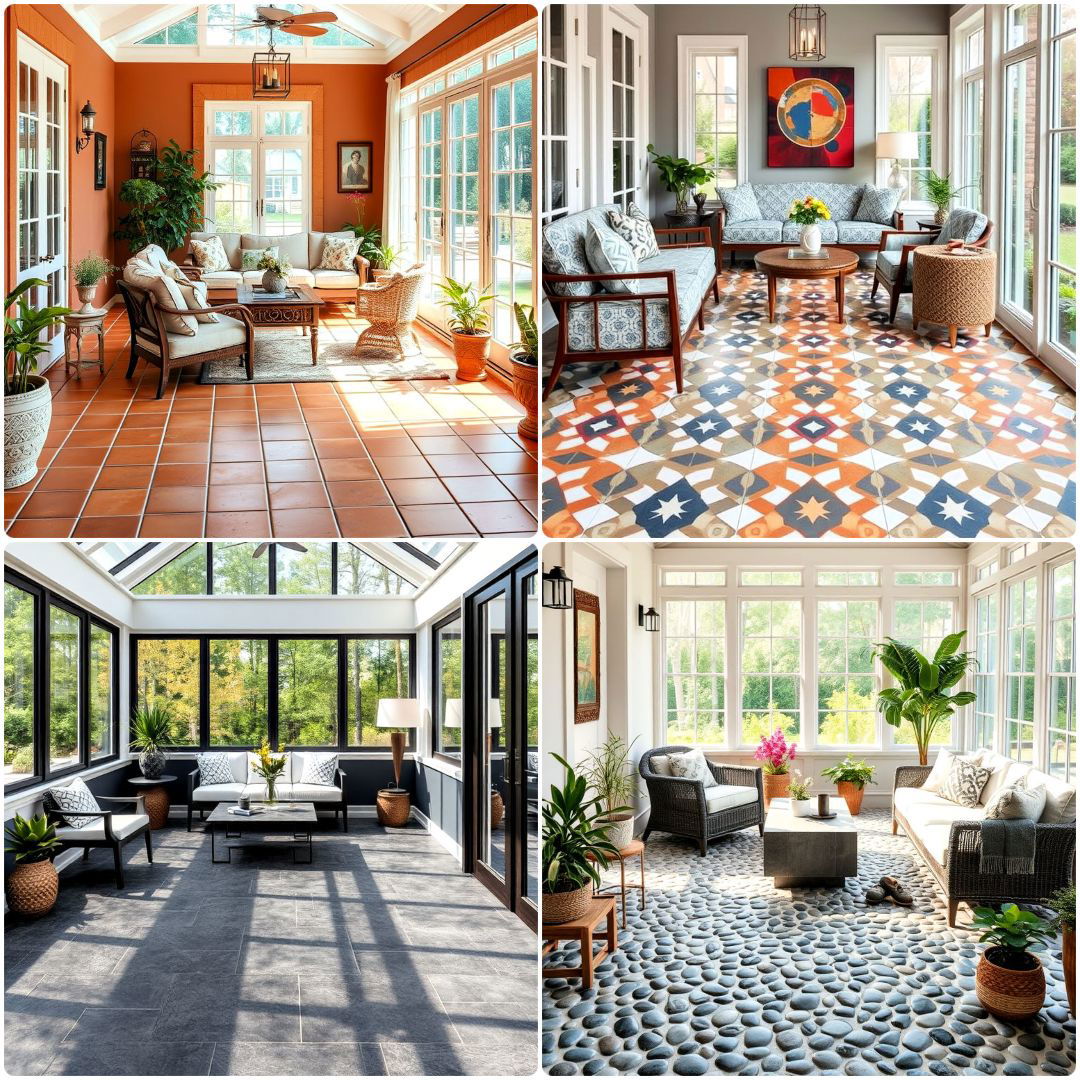
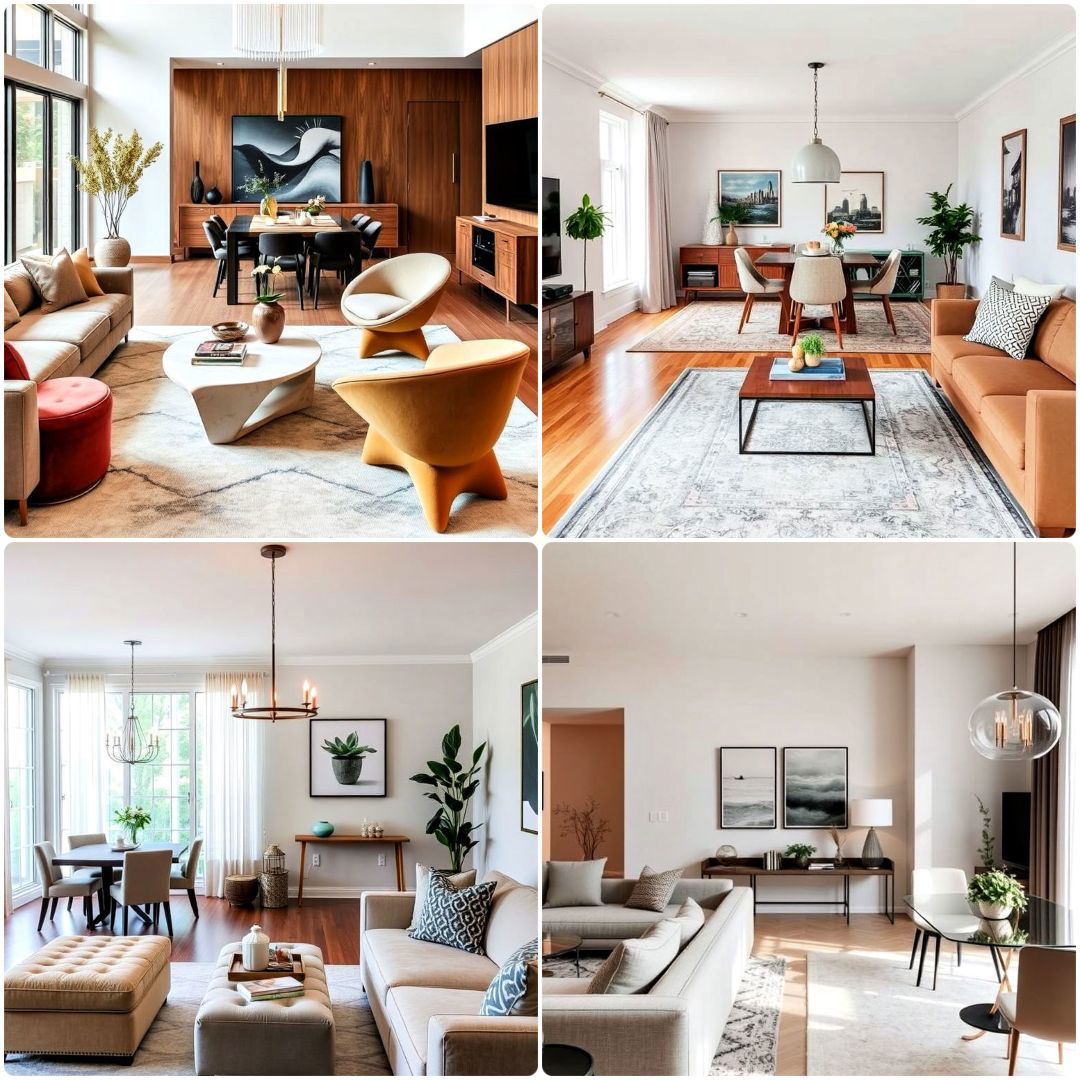
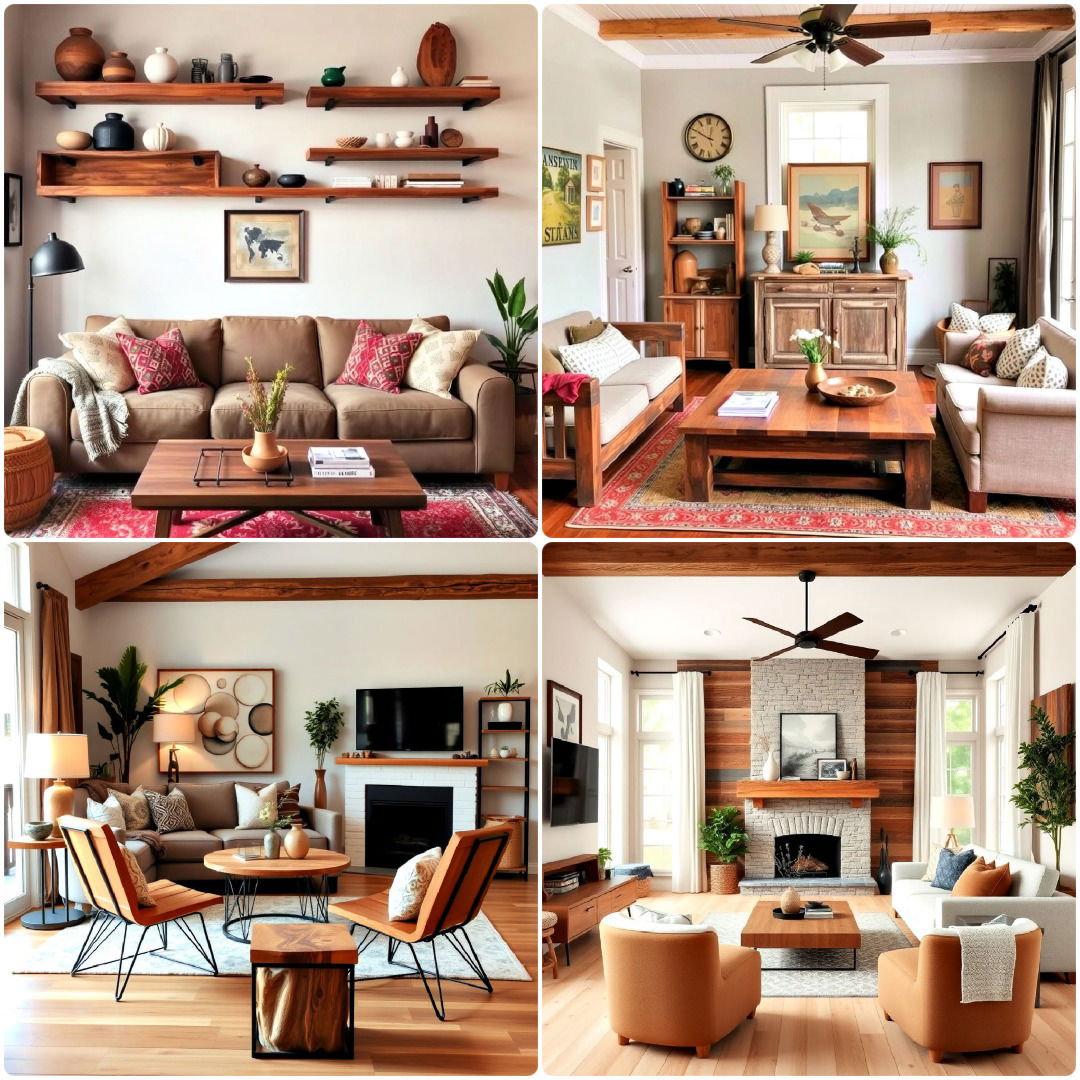
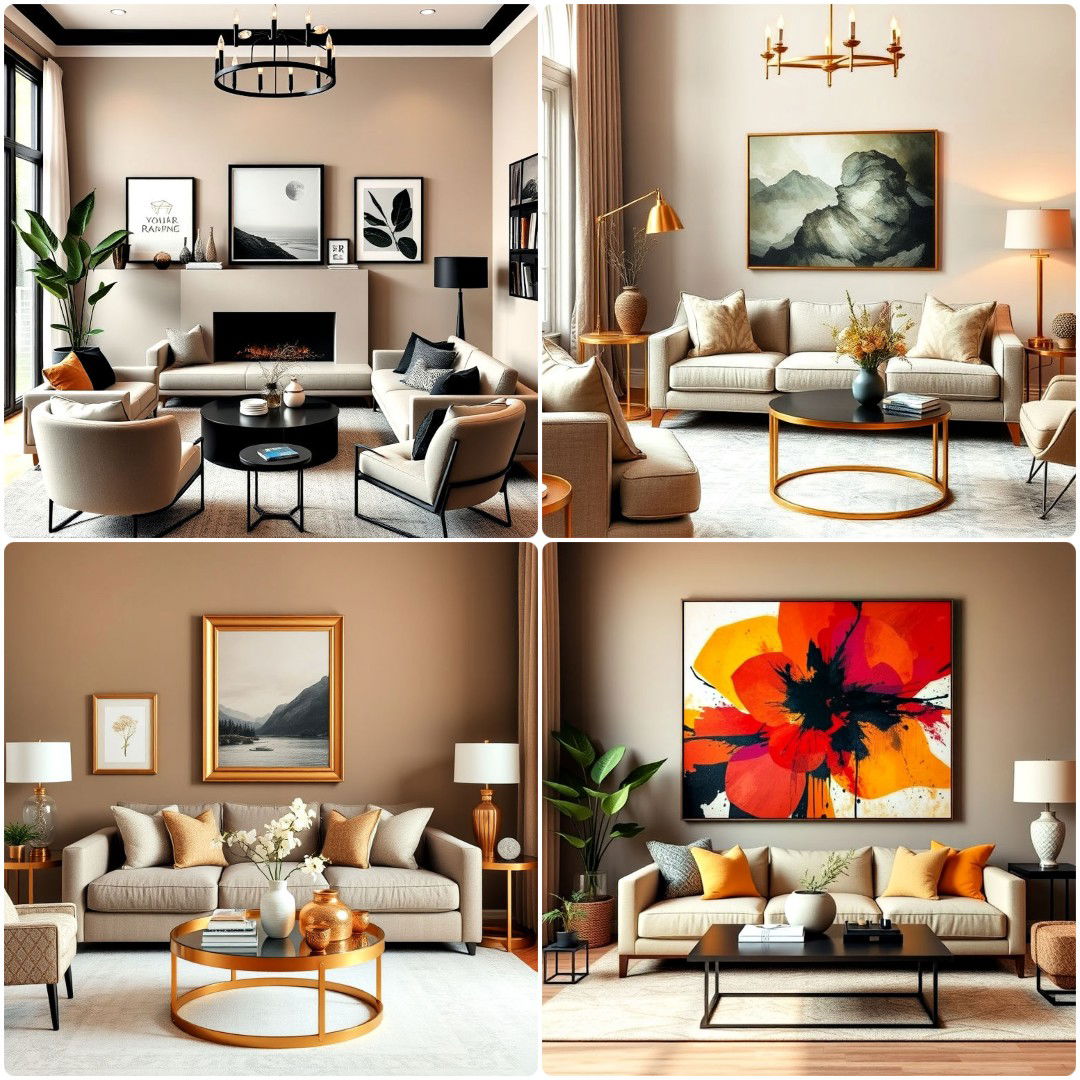
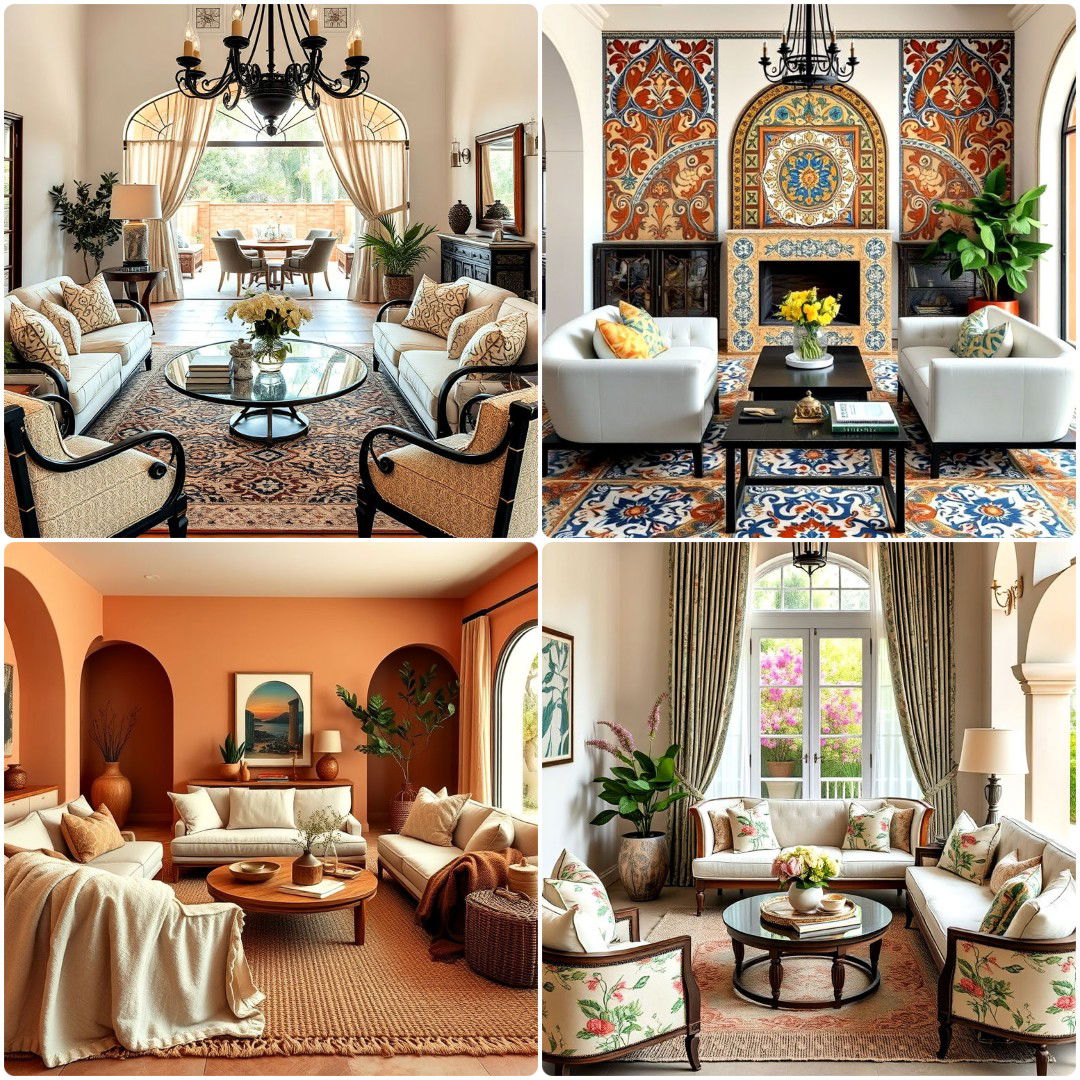
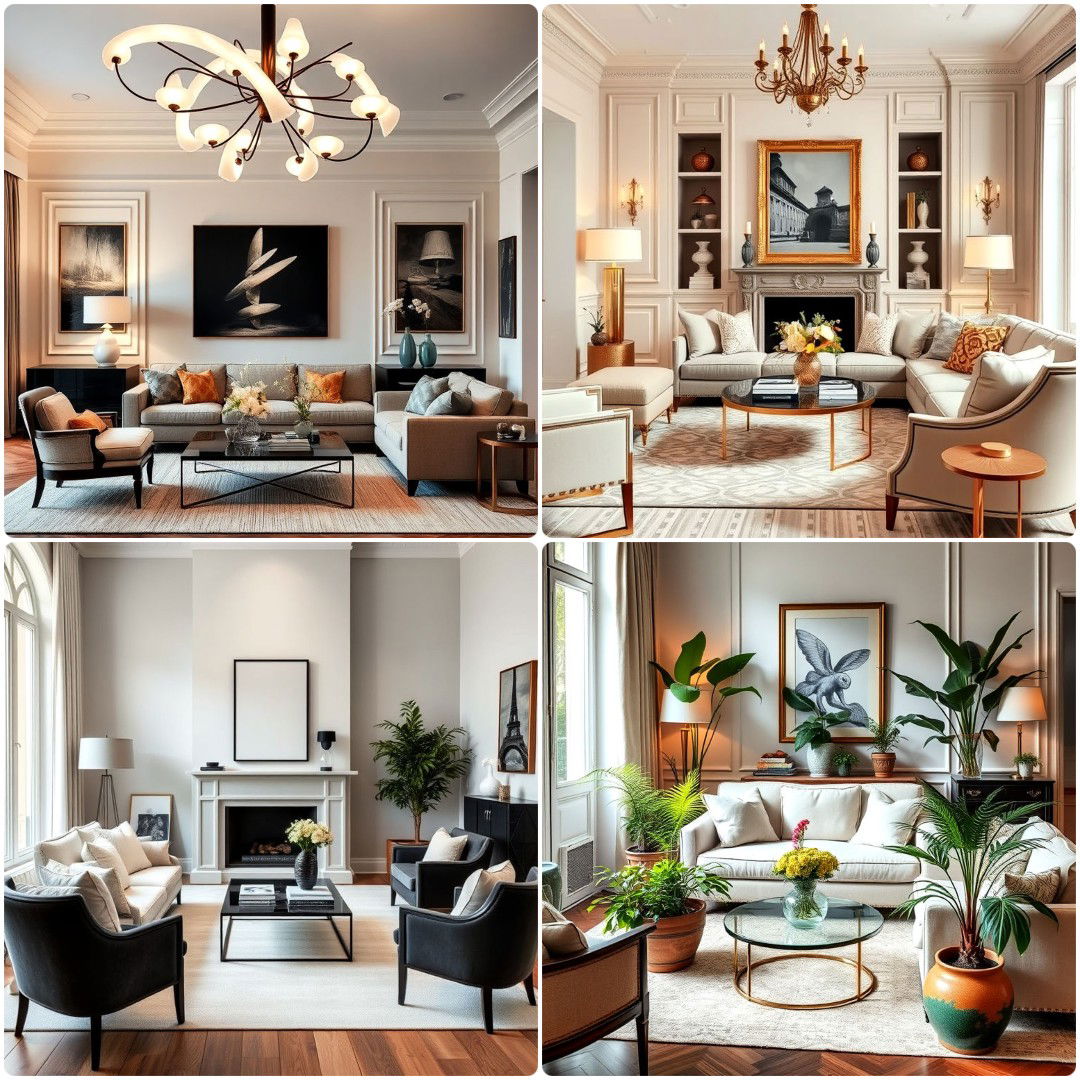
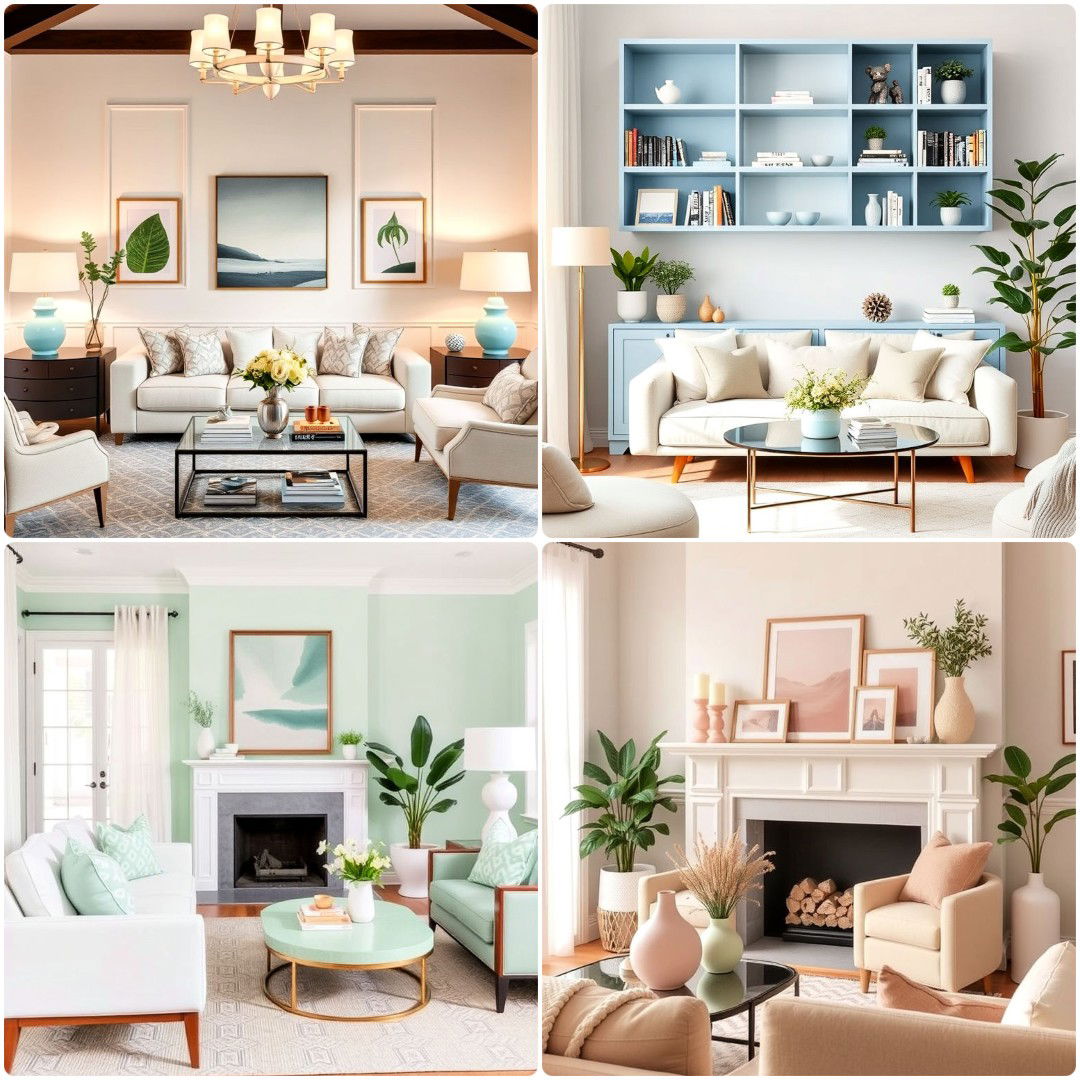
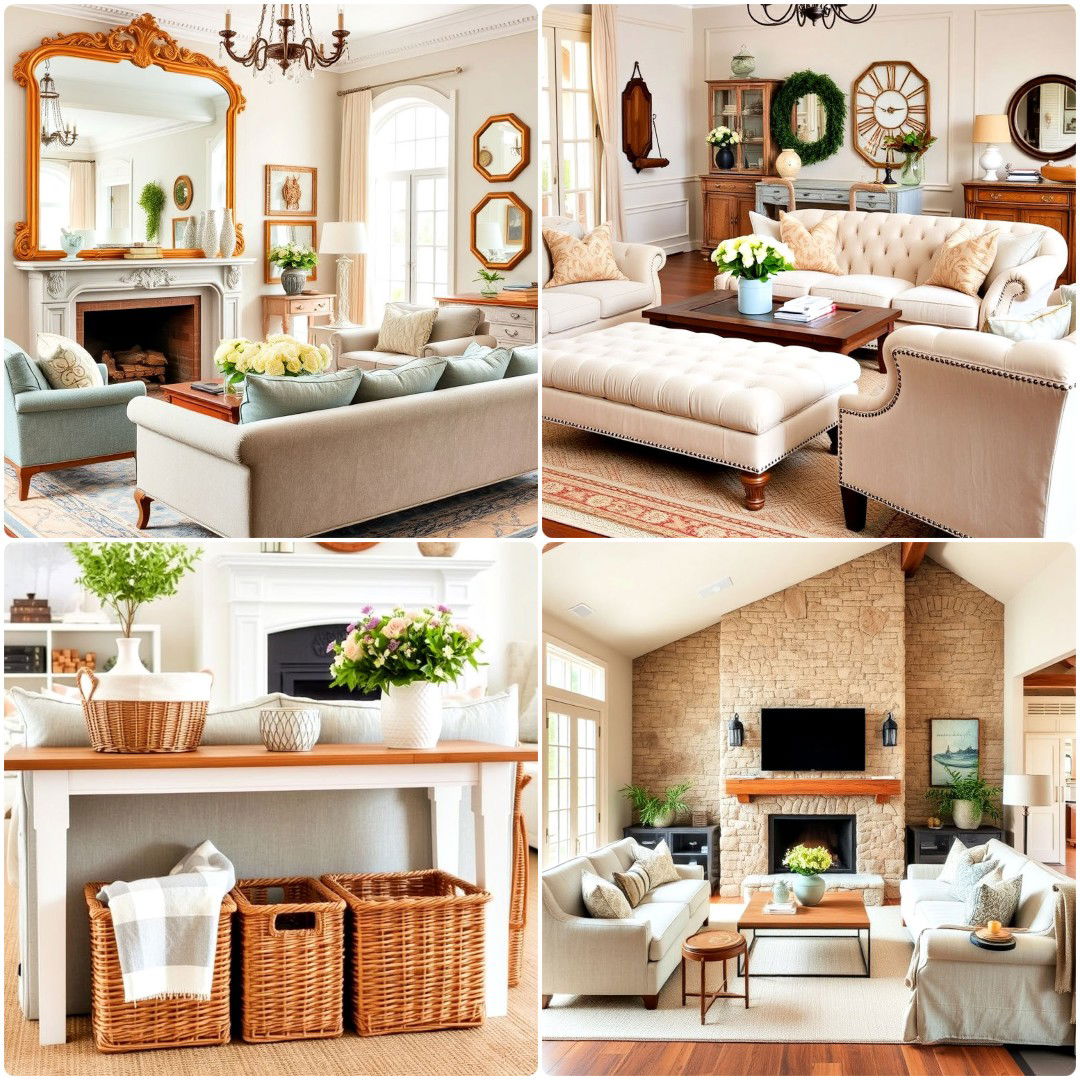
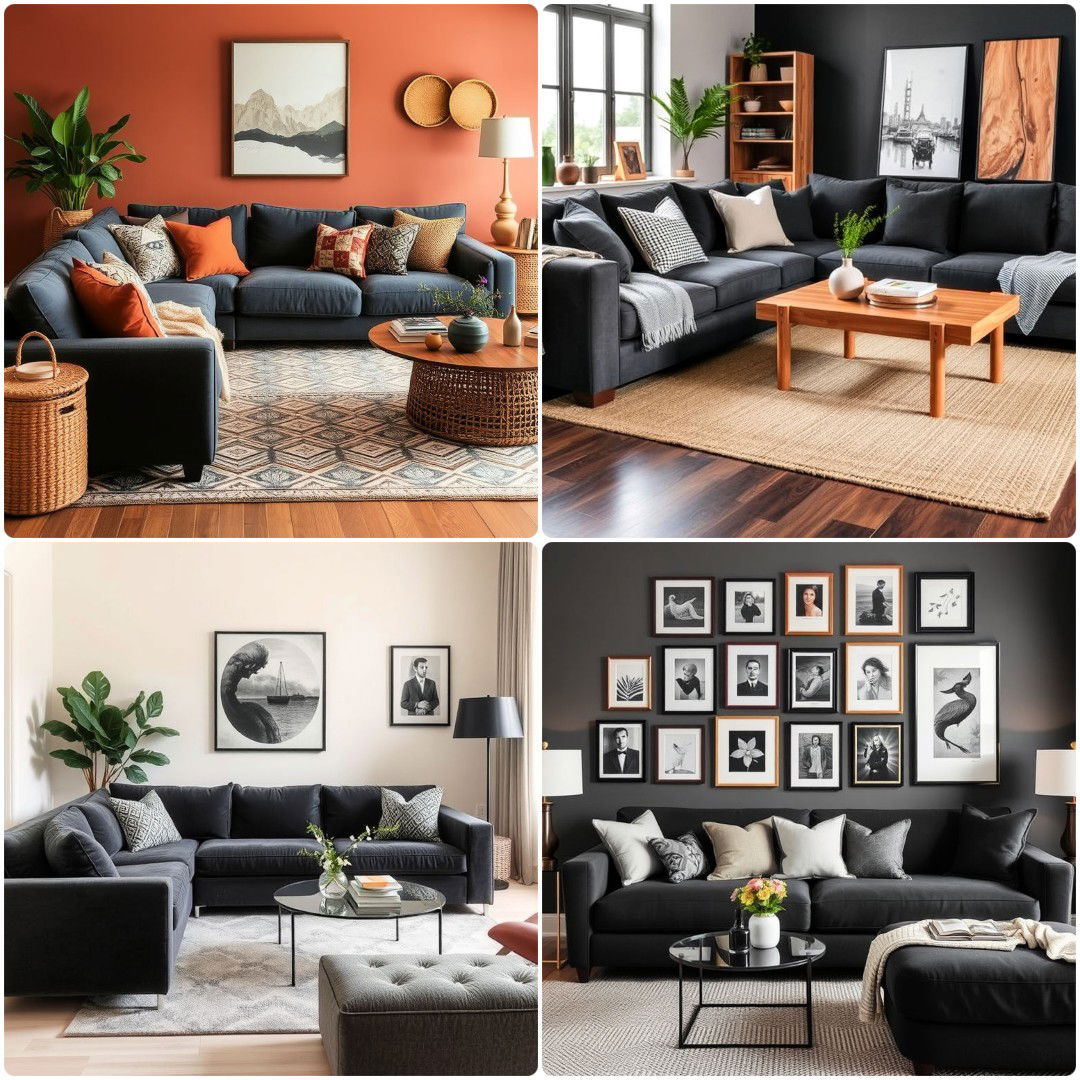
Leave a Reply